Deer Killed By Train, Stolen By Train Driver, Later Caught Drunk Driving
January 26, 2021 – Road kill we've heard of. But rail kill? One Slavonia deer killed by train was due to end up on the dining table of a train driver, who stopped his train to stuff the dead deer into his cab, before later being caught drunk driving with the decapitated animal in his trunk
Road kill we've heard of. But rail kill? One Slavonia deer killed by train was due to end up on the dining table of a train driver, who stopped his train to stuff the dead animal into his cab. Alas, the čobanac (a spicy, wild meat stew, popular in Slavonia) was not meant to be. He was caught drunk-driving the next day by police at a traffic stop in Vinkovci and arrested.
It's perhaps easy to understand the train driver not wanting to look such a gift horse, or deer, in the mouth. This is not the first deer killed by train or car within the wild rural landscape of Slavonia. With the unfortunate collision having offered the opportunity for fine dining, the train driver apparently had a one track mind.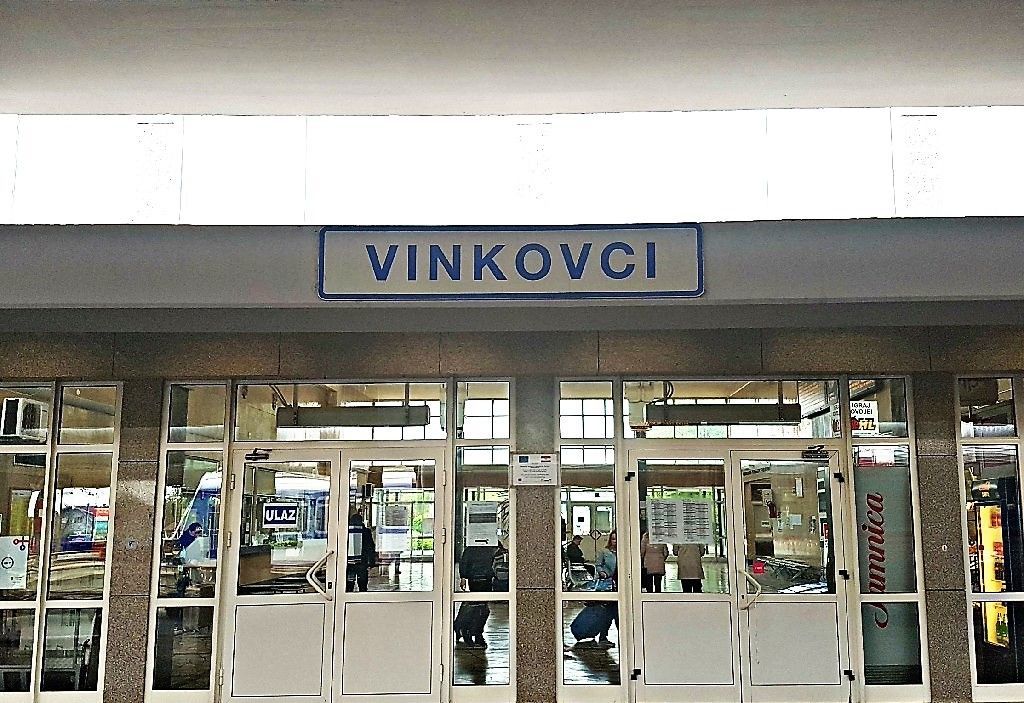
However, with the benefit of hindsight, it was perhaps not the best i-deer to retrieve the sizeable body of the deer killed by train to save for a later feast. Less easy to forgive is that he was caught with the deer while driving his car under the influence of alcohol. Such foolhardiness is no way to go about covering your tracks.
Police halted the man around 5pm on January 12 at a regular traffic roe-d stop and breathalysed him, as they correctly suspected he had been drinking. The 56-year-old man, who had Vinkovci license plates was found to be under the influence of alcohol (1.22 g / kg). However, that was just the first of the finds on the stop.
Upon searching the car trunk, police discovered the decapitated corpse of a sizeable deer. It turned out the train driver had stopped his train the day before to retrieve the animal and placed it in the driver's cab for consumption at a later date. The animal was presumably being transported home – or to a local butcher – by car the next day. But, the traffic stop put an end to any notions of a free meal.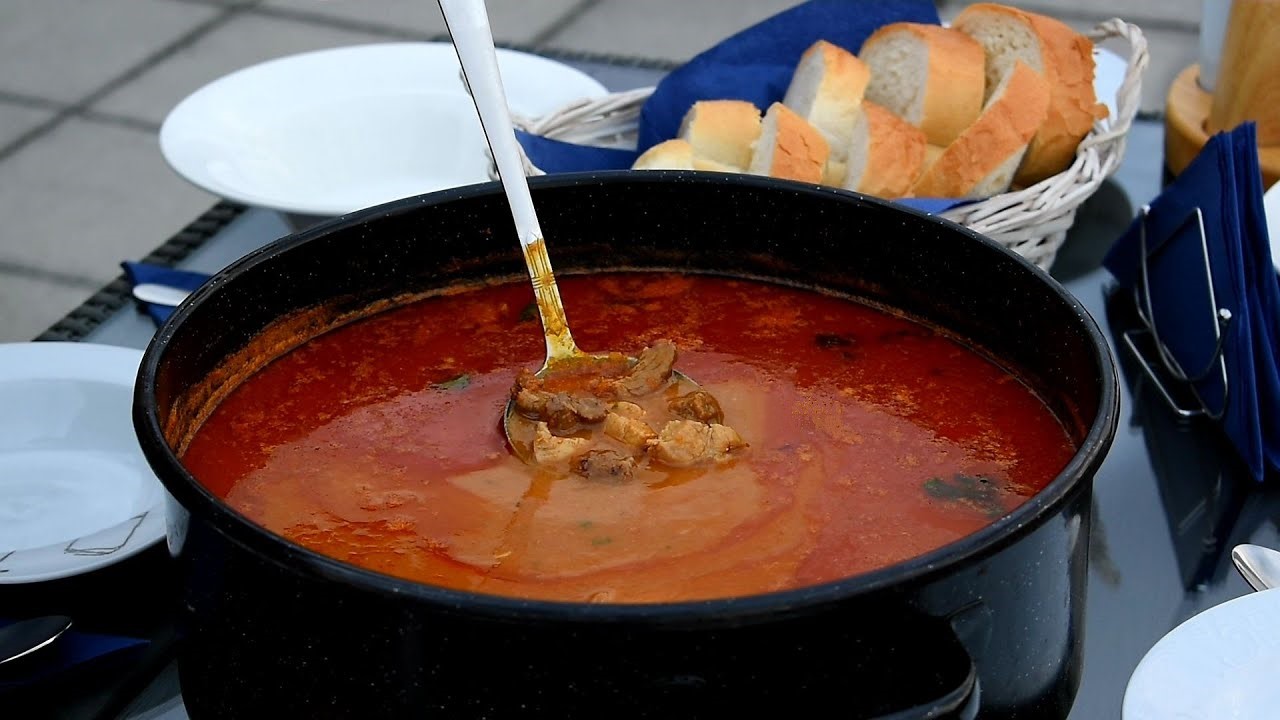 Cobanac, a hearty, spicy stew made in Slavonia using deer and other wild meats. Alas, it was not meant to be © Youtube screenshot
Cobanac, a hearty, spicy stew made in Slavonia using deer and other wild meats. Alas, it was not meant to be © Youtube screenshot
The deer corpse was confiscated and handed over to the hunting society of Stari Mikanovac for safekeeping until a warrant for an autopsy was obtained in order to determine the cause of death. Pursuant to the order of the Vinkovci Municipal State Attorney's Office, the examination of the deer carcass was performed by the Vinkovci Veterinary Institute.
For the appropriation of the deer, the police filed a complaint at the Municipal State Attorney's Office in Vinkovci against the 56-year-old for the criminal offence of theft. For his inebriated driving, the man was issued a misdemeanour order, imposing a fine of HRK 5,000 and was banned from driving a "B" category vehicle for two months. Having been charged for both excess beer and excess deer, at the time of the police road stop you could say the game was well and truly up.
Products of Slavonian and Baranja Gastronomic Offer Available Online
December 22, 2020 – Thanks to the internet platforms Eko tržnica and Eceker, domestic products from the rich domestic Slavonian and Baranja gastronomic offer can be ordered to your doorstep even during the coronavirus epidemic.
As Lokalni.hr reports, even during the coronavirus pandemic, products from the rich domestic Slavonian and Baranja gastronomic offer can be ordered online to your doorstep. This is possible thanks to the two internet platforms – Eko tržnica and Eceker, both of which deliver in the area of Osijek-Baranja County and the City of Zagreb. Eko tržnica is a successful project that has been implemented at the Osijek market since 2013, and in the last few years in an online edition. Their phylosophy is that food production must not pollute nature but must return us to nature.
On Eko tržnica and Eceker websites, family farms with ecological certification for food production offer their products. Customers in Croatia are increasingly aware and are looking for products of guaranteed origin, and the goal of the Solidarity Ecological Group, which coordinates buying and selling, is an ethical business, aiming to leave profits in the hands of producers and offer customers products at producer prices.
"By buying local agricultural products, especially at a time when their sales are difficult due to epidemiological measures, we help our family farms, and we provide ourselves and our families with home-grown fruits and vegetables from Slavonian and Baranja fields," said Osijek-Baranja County Prefect Ivan Anušić.
Local food producers have also united through the Eceker platform, where they offer traditional products from Slavonia and Baranja. As in the case of the Eko tržnica, this is a project supported by the Osijek-Baranja County, and both platforms are open for cooperation with local producers in order to further enrich the offer to end customers. Customers can see and order domestic products on the website, and delivery is on the doorstep.
To read more about lifestyle in Croatia, follow TCN's dedicated page.
PHOTOS: Epic Croatia Weather Photography Stuns The World
December 20, 2020 – The 13 winners of the incredibly popular World Meteorological Organization annual competition have just been announced, and two fine pieces of Croatia weather photography are among them. These spectacular images of Croatia weather photography show all 9 Croatian photographs which reached the final in 2020 and all 10 Croatian finalists who similarly stunned the global audience in 2019
Croatia weather photography: the two newly announced winners from the 2020 competition Photographer: Sandro Puncet Photo taken: Losinj island
Photographer: Sandro Puncet Photo taken: Losinj island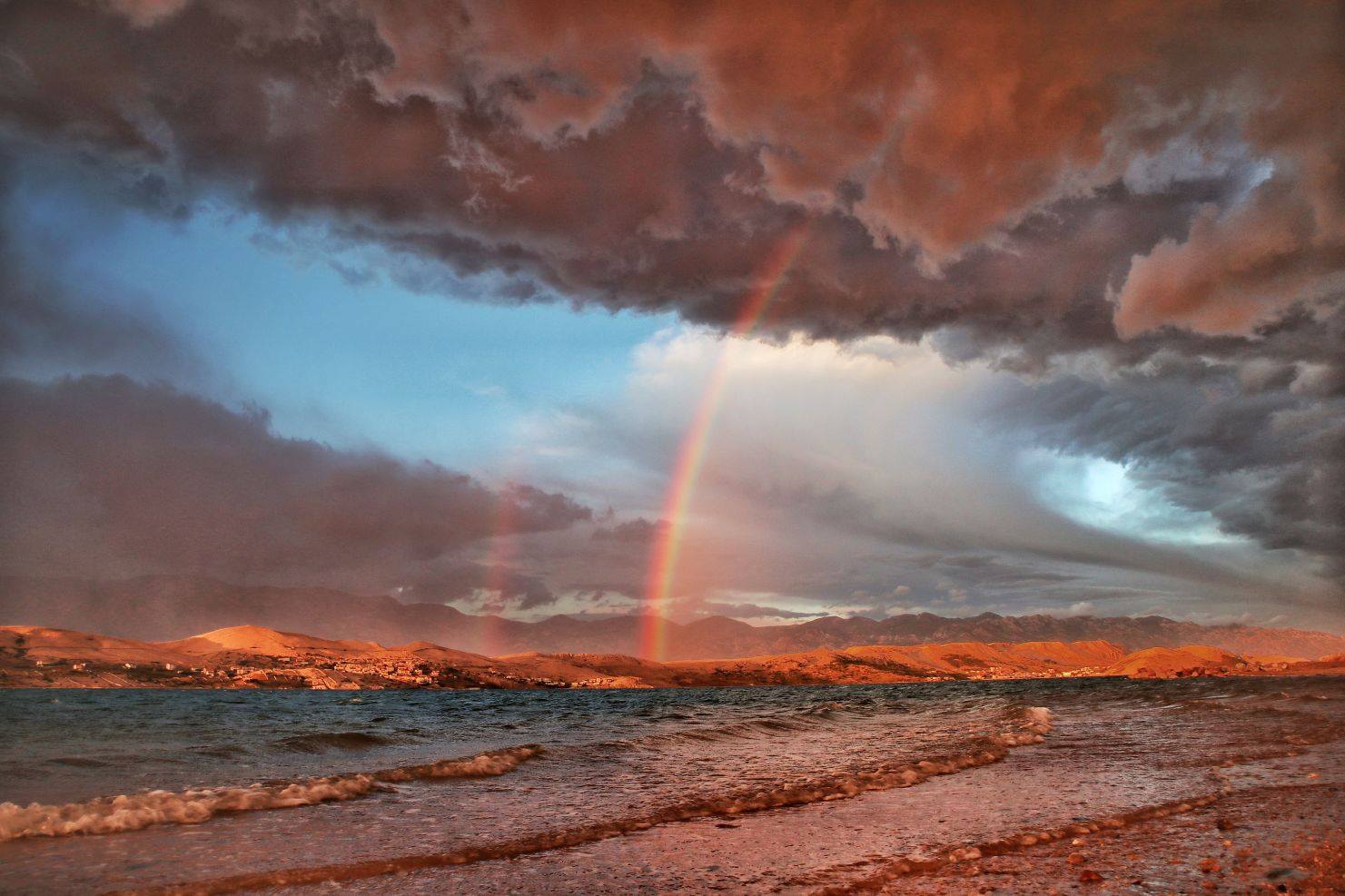 Photographer: Zrinka Balabanic Photo taken: Pag island
Photographer: Zrinka Balabanic Photo taken: Pag island
Thanks to its popularity as a tourist destination, lots of people are now used to seeing beautiful photos of Croatia. Although, the images they usually see are of idyllic beaches, cloudless skies, stunning nature and turquoise blue seas. But, as anyone who knows the country will tell you - and as these photos show - Croatia isn't always like that.
Croatia weather photography: the two newly announced runners-up from the 2020 competition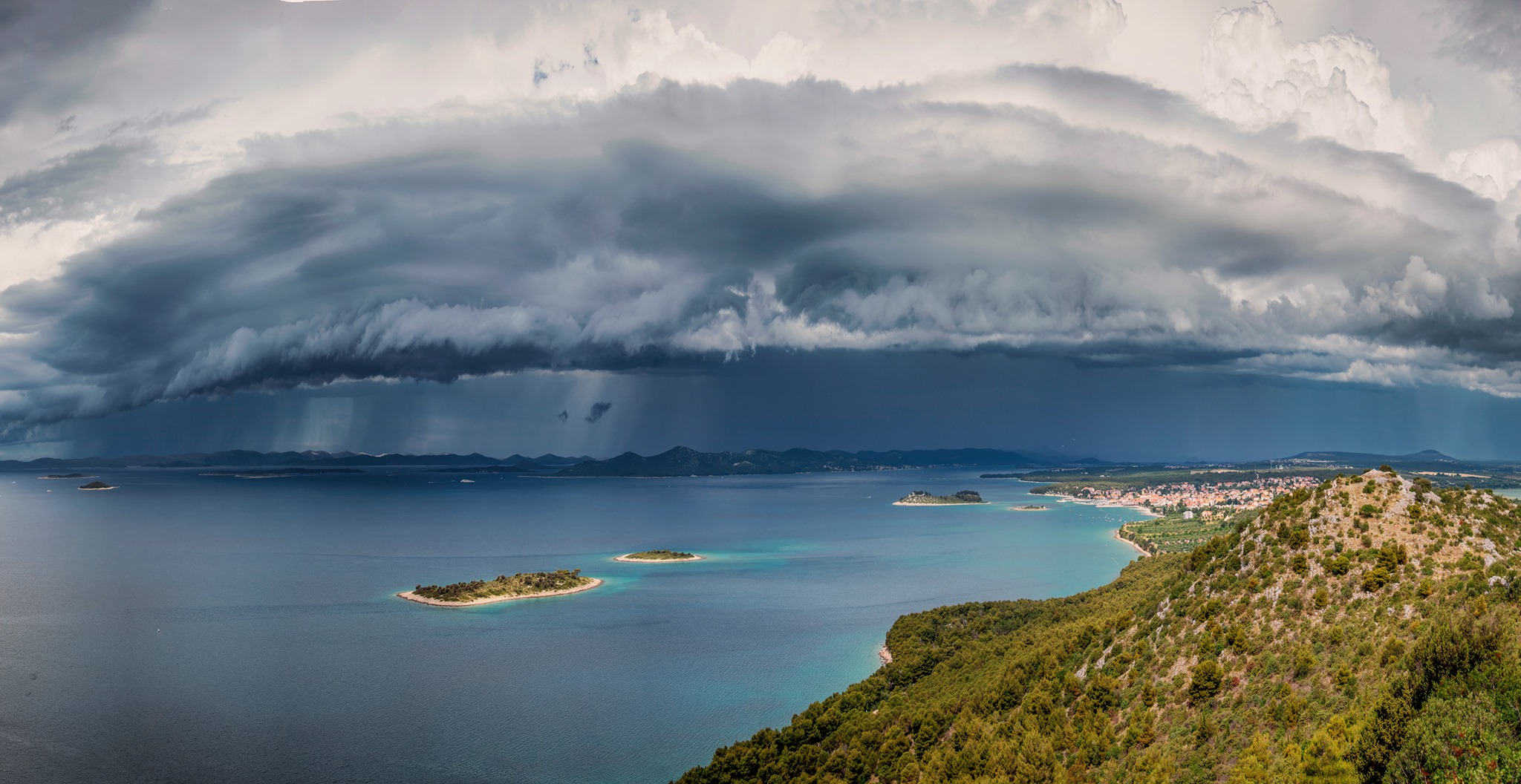 Photographer: Šime Barešić Photo taken: Drage, Pakostane
Photographer: Šime Barešić Photo taken: Drage, Pakostane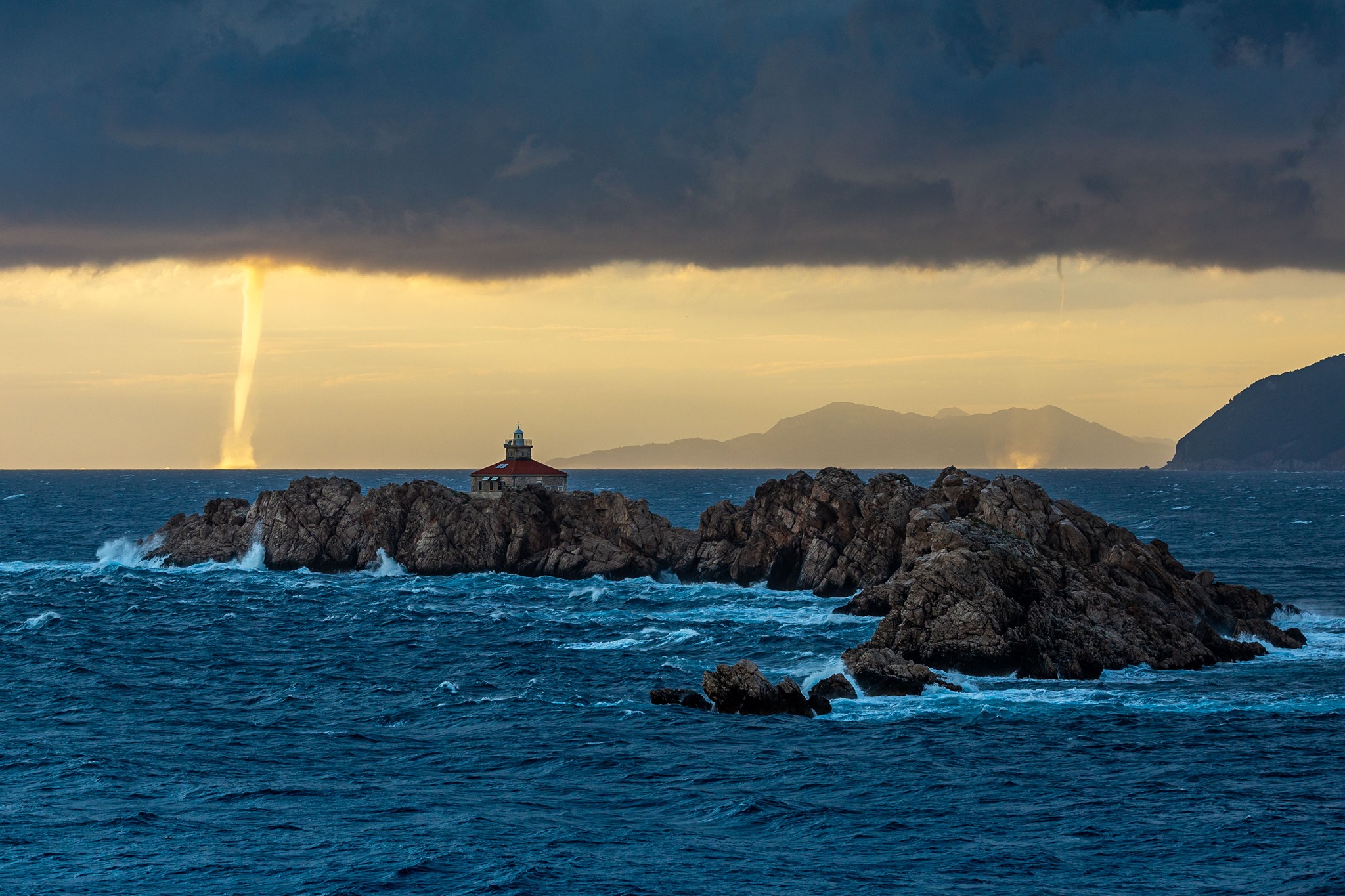 Photographer: Mislav Bilic Photo taken: Lapad Peninsula, Dubrovnik
Photographer: Mislav Bilic Photo taken: Lapad Peninsula, Dubrovnik
Out of season, Croatia can experience vastly different weather conditions to those advertised in travel brochures and blogs. And, whenever there's a spectacular weather occurrence, usually there's a photographer out there, braving the elements, trying to capture it.
Over recent years, some of the best Croatia weather photography has featured in the annual competition organised by the World Meteorological Organization. 2020 has been no different.
The other five Croatian finalists from the 2020 competition Photographer: Šime Barešić Photo taken: Drage, Pakostane
Photographer: Šime Barešić Photo taken: Drage, Pakostane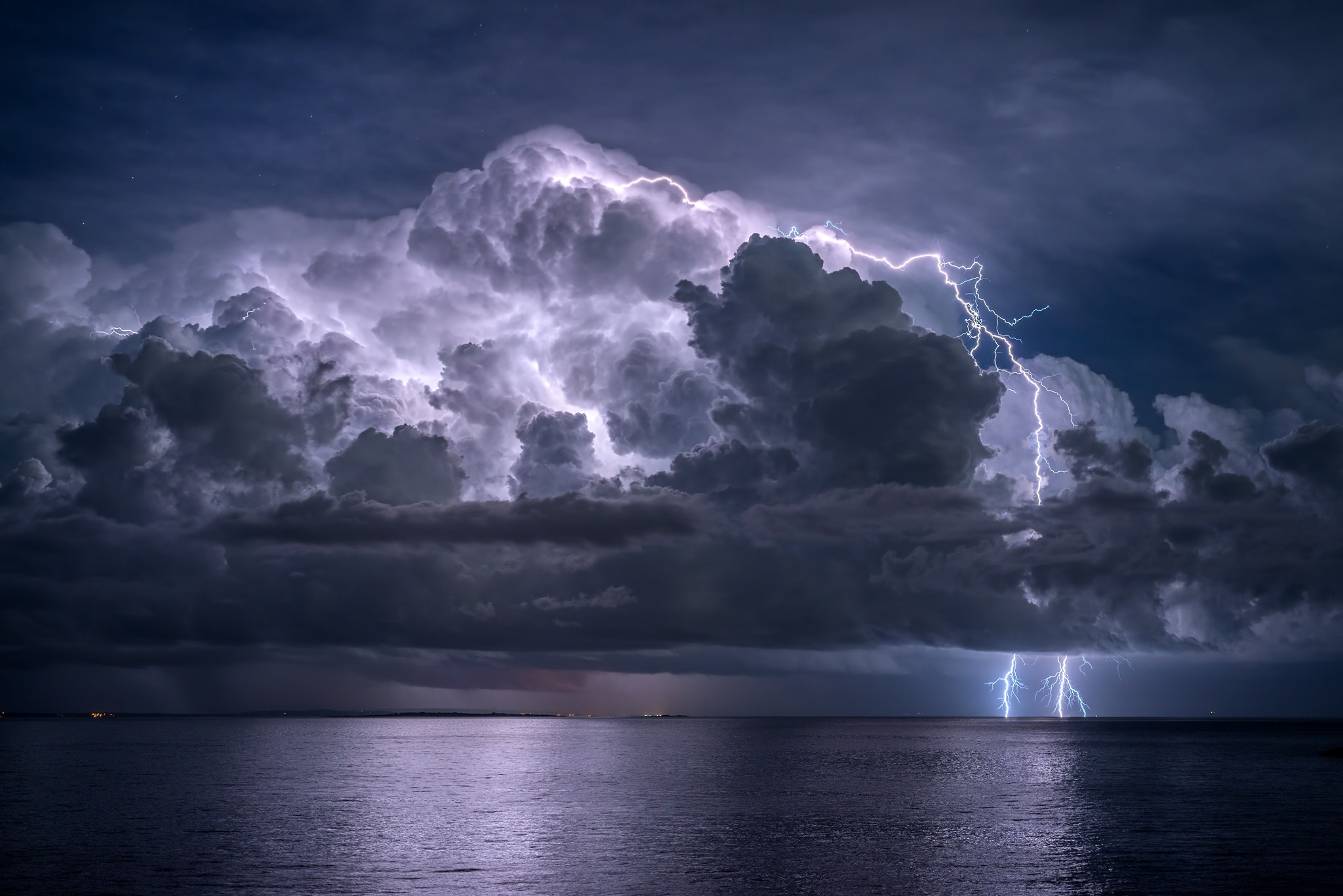 Photographer: Sandro Puncet Photo taken: Losinj island
Photographer: Sandro Puncet Photo taken: Losinj island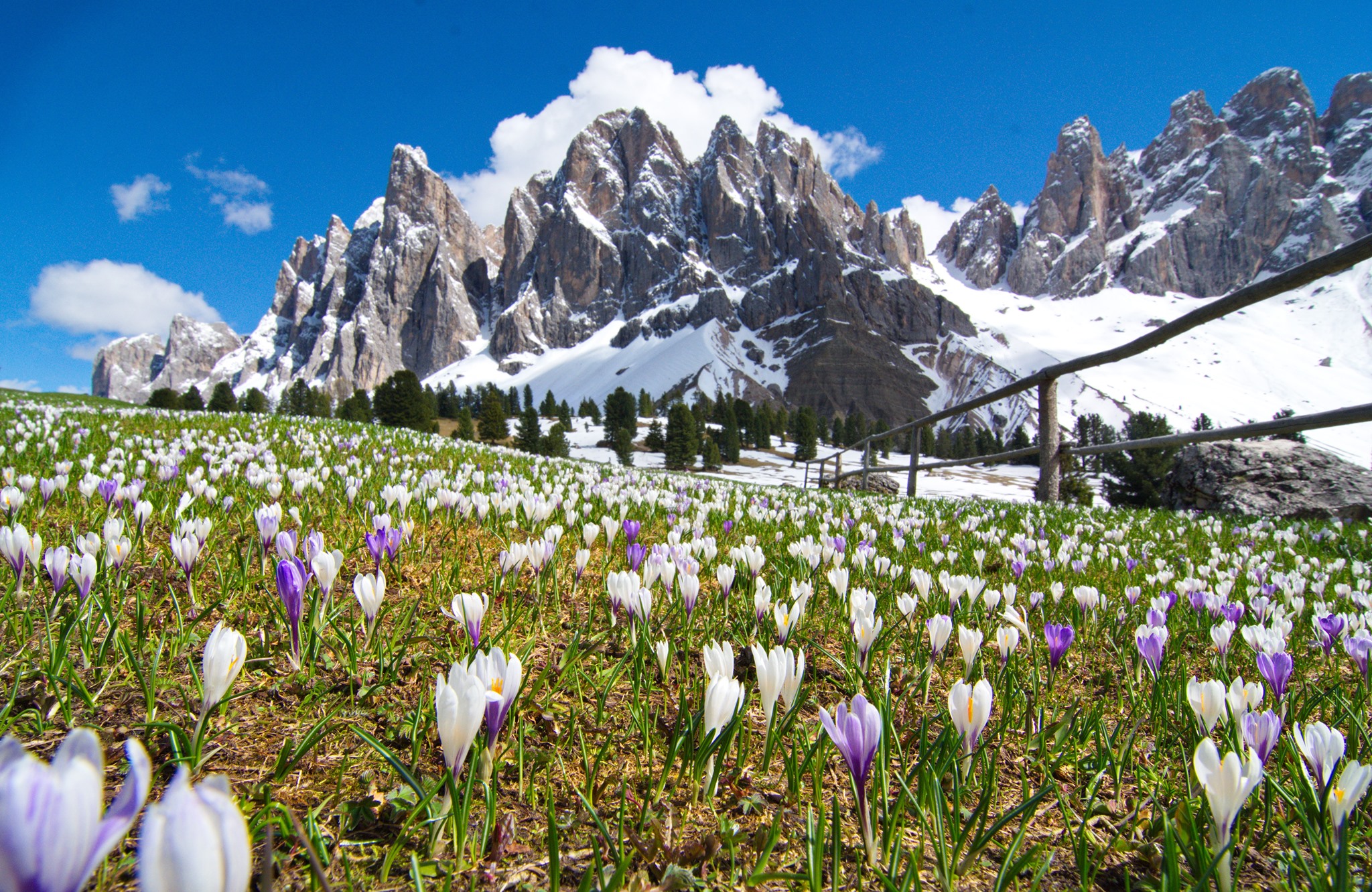 Photographer: Zoran Stanko Photo taken: Geisler Alm, Dolomites, Italy
Photographer: Zoran Stanko Photo taken: Geisler Alm, Dolomites, Italy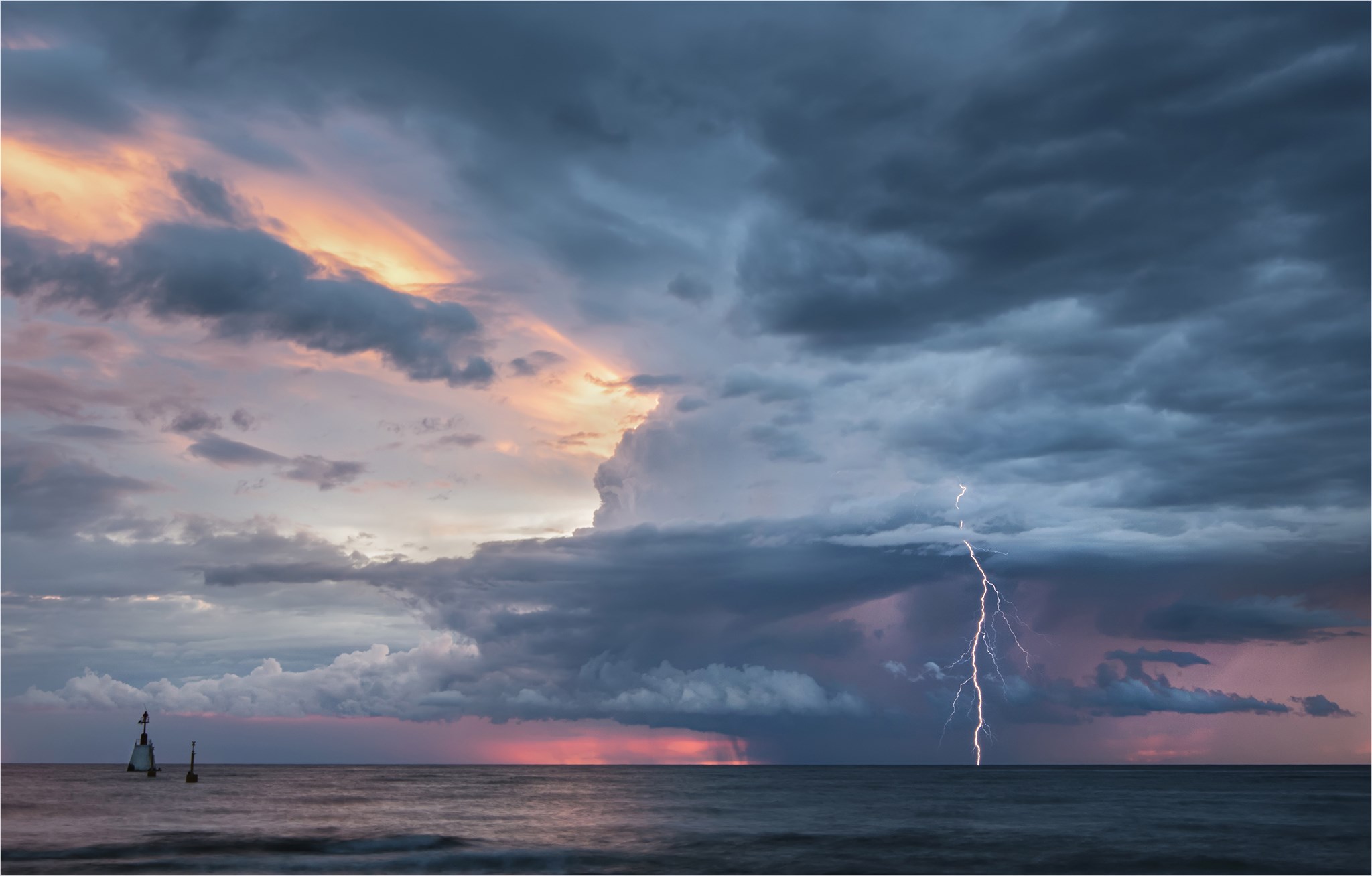 Photographer: Maja Kraljik Photo taken: Umag, Istria
Photographer: Maja Kraljik Photo taken: Umag, Istria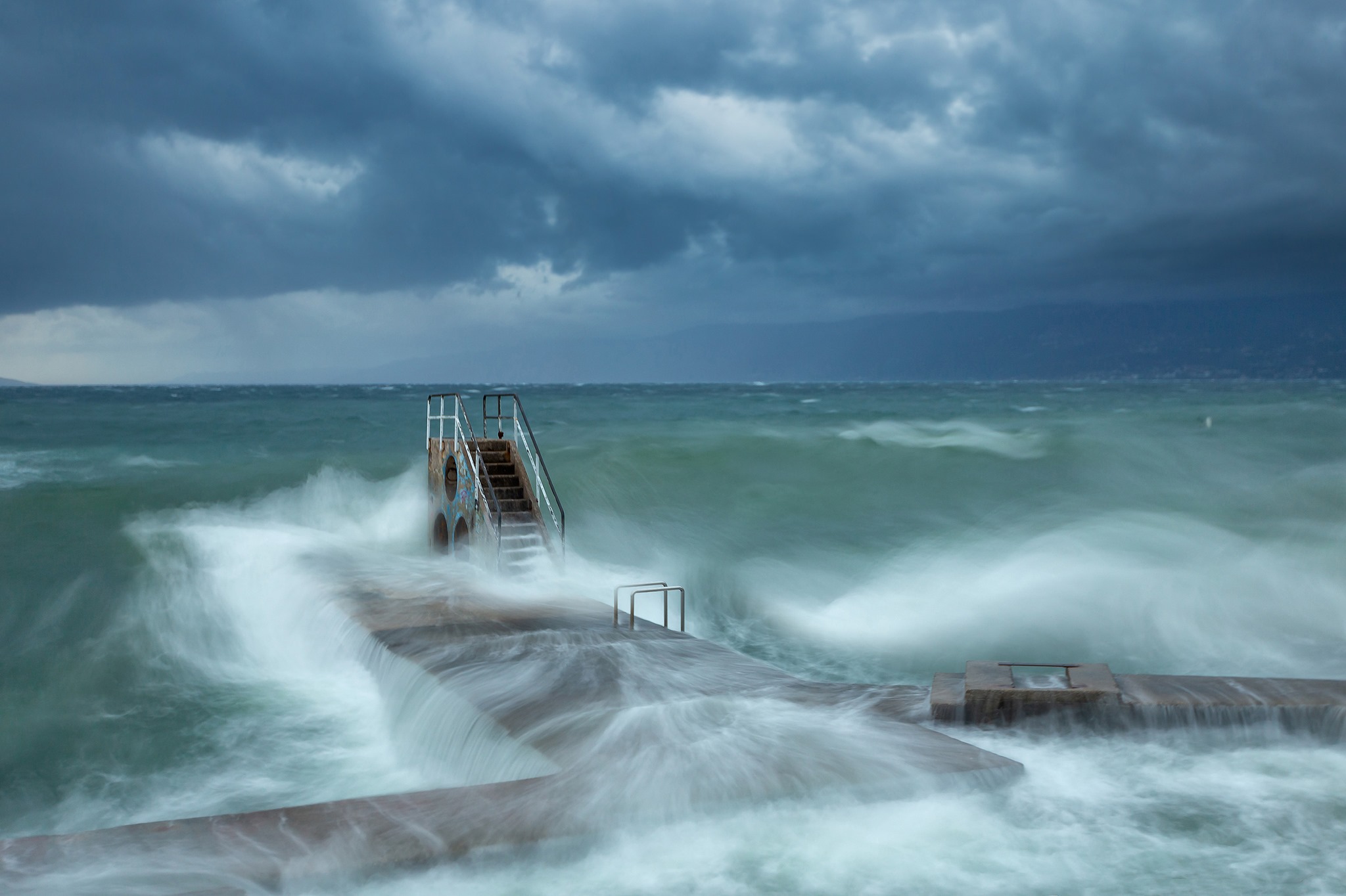 Photographer: Igor Popovic Photo taken: Rijeka
Photographer: Igor Popovic Photo taken: Rijeka
The winners of this year's competition have just been announced and the two fantastic examples of Croatia weather photography within the top 13 will take their place in the 2021 World Meteorological Organization calendar.
The 10 Croatian finalists from the 2019 competition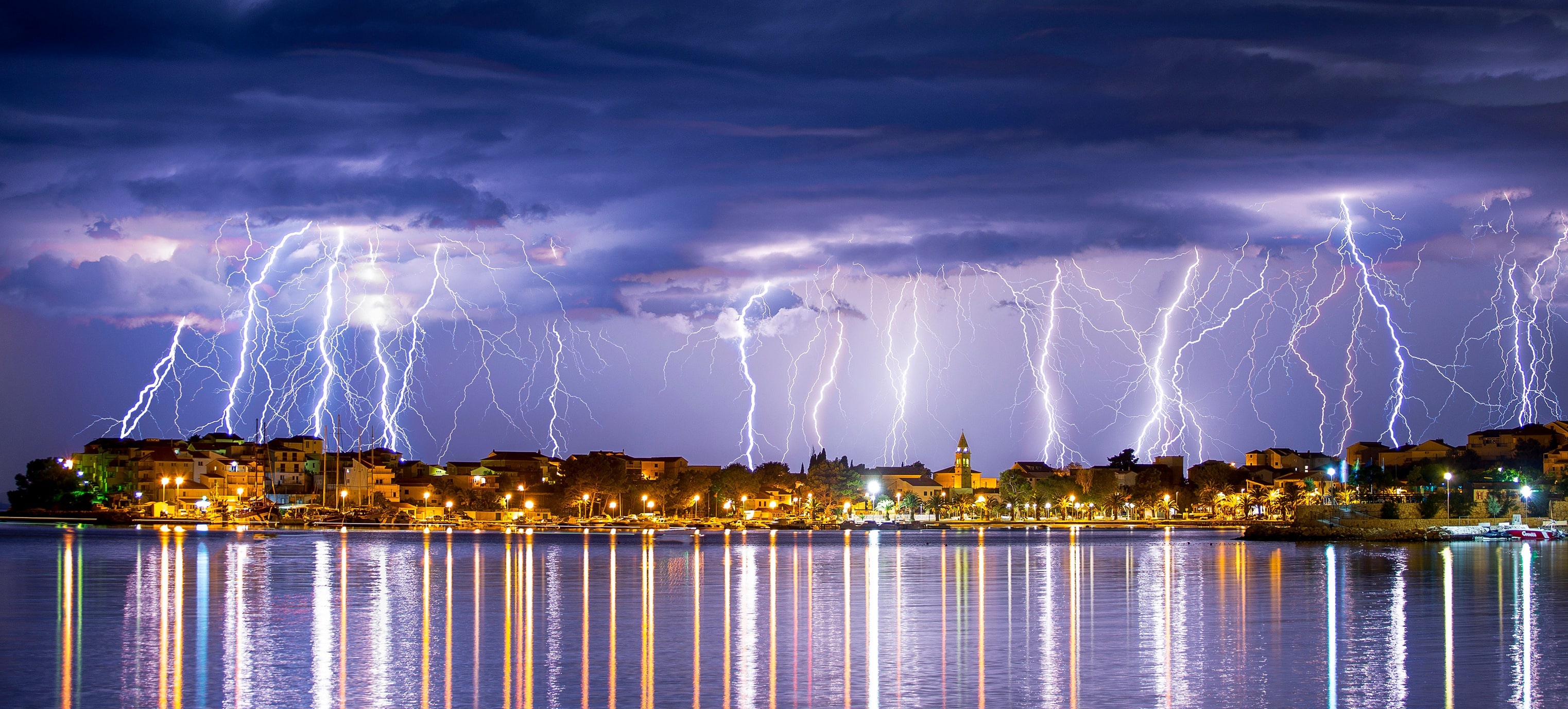 Photographer: Danica Sičič Photo taken: Srobreč, Dalmatia
Photographer: Danica Sičič Photo taken: Srobreč, Dalmatia Photographer: Romeo Ibrišević Photo taken: Plitvice Lakes National Park
Photographer: Romeo Ibrišević Photo taken: Plitvice Lakes National Park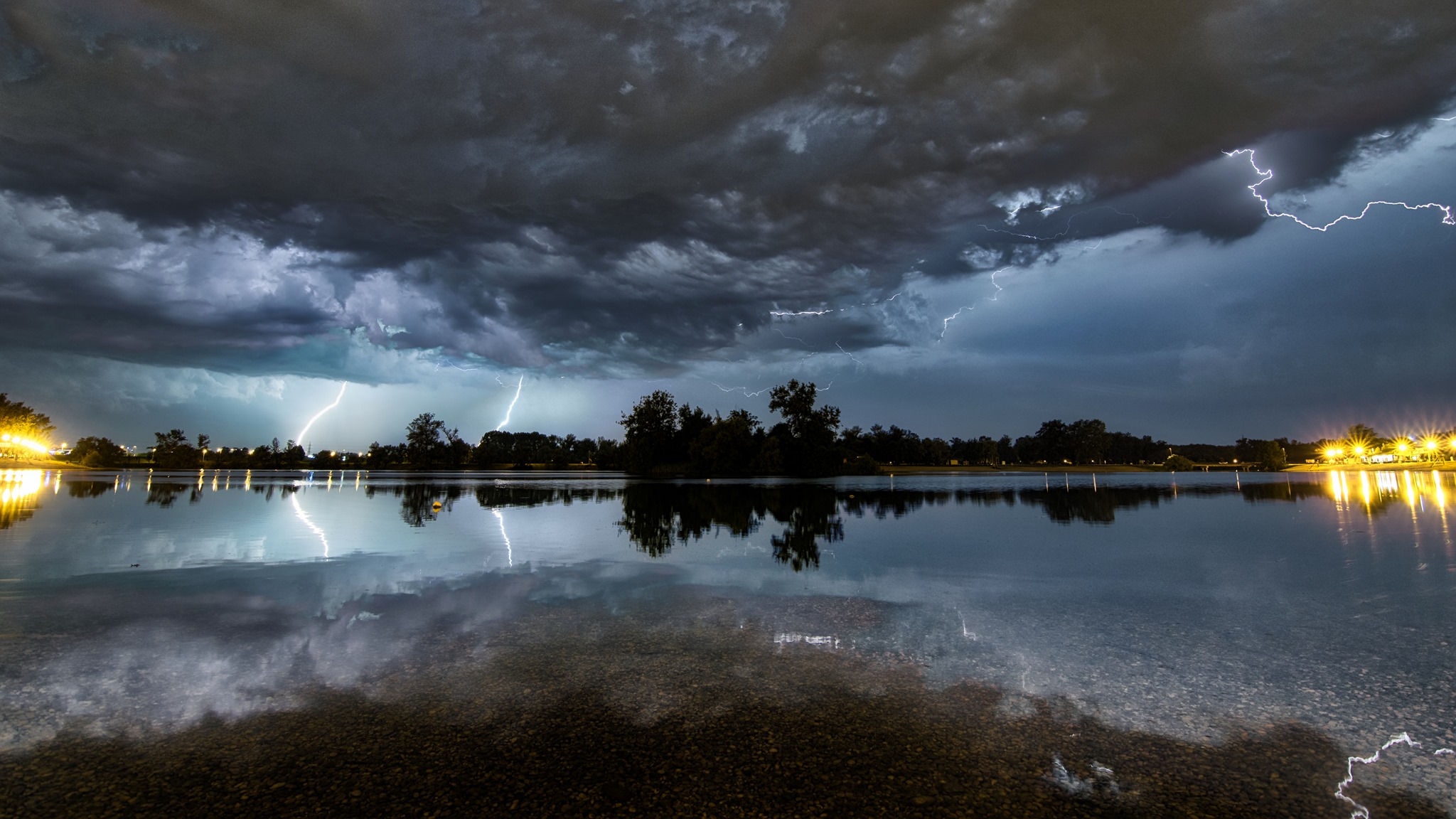 Photographer: Božan Štambuk Photo taken: Bundek park, Zagreb
Photographer: Božan Štambuk Photo taken: Bundek park, Zagreb Photographer: Miroslava Novak Photo taken: Pribislavec, Međimurje
Photographer: Miroslava Novak Photo taken: Pribislavec, Međimurje
As well as the two winners, two further examples of Croatia weather photography came in the runner-up category, of which there were 12 in total.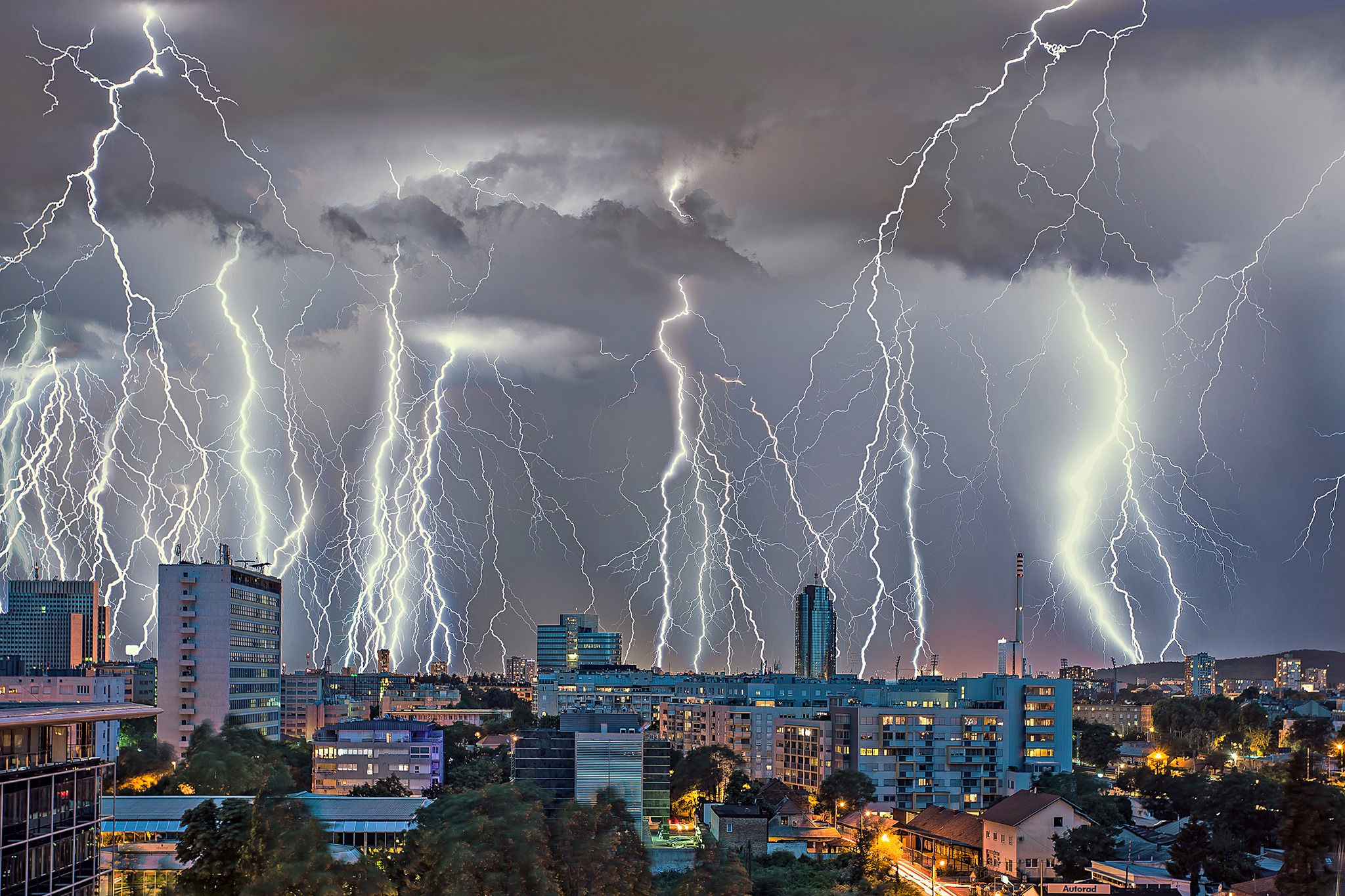 Photographer: Francesca Delbianco Photo taken: Zagreb
Photographer: Francesca Delbianco Photo taken: Zagreb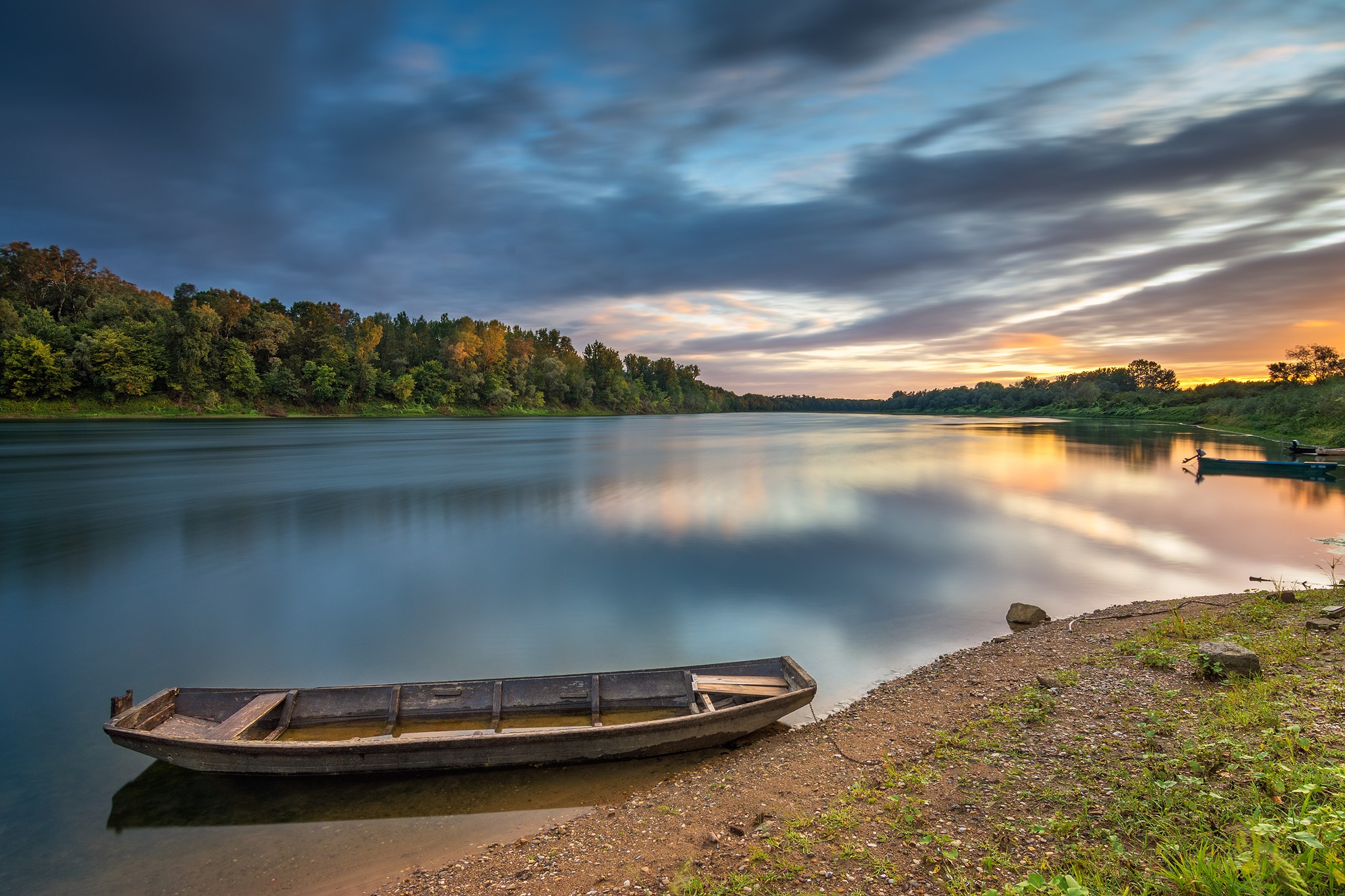 Photographer: Ivica Brlić Photo taken: Sava river, Davor, near Slavonski Brod
Photographer: Ivica Brlić Photo taken: Sava river, Davor, near Slavonski Brod Photographer: Nataša Šafar Photo taken: Rečica, near Karlovac
Photographer: Nataša Šafar Photo taken: Rečica, near Karlovac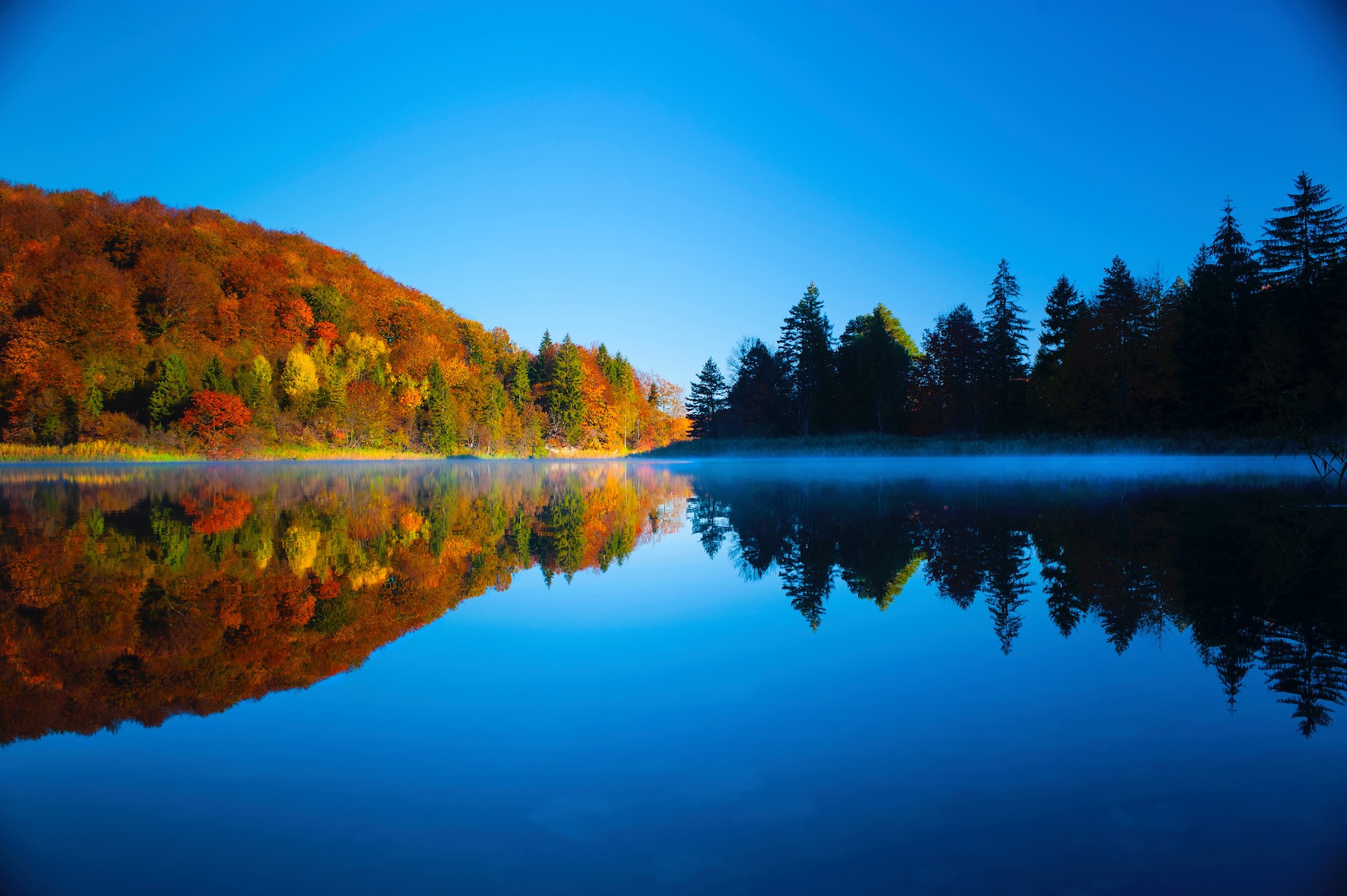 Photographer: Romeo Ibrišević Photo taken: Plitvice Lakes National Park
Photographer: Romeo Ibrišević Photo taken: Plitvice Lakes National Park
Over 1000 photographs from all over the world were entered in the 2020 competition. The submissions were narrowed down to a final selection of 70 contenders. As TCN reported back at the start of October, no less than 9 examples of Croatia weather photography made it into the final 70, taken by 7 Croatian photographers. Photographer: Danijel Palčić Photo taken: Pag island
Photographer: Danijel Palčić Photo taken: Pag island Photographer: Aleksandar Gospic Photo taken: Ražanac
Photographer: Aleksandar Gospic Photo taken: Ražanac
Croatia regularly punches well above its weight in the annual competition, as we can see from these 10 examples of incredible Croatia weather photography that were among the finalists in 2019.
All images courtesy World Meteorological Organisation
VIDEO: PlayStation 5 Release in Croatia Marked by Klapa and Traditional Instruments
December 13, 2020 - The PlayStation 5 release in Croatia has been marked by the traditional music of Croatian regions.
The PlayStation 5 is one of the most anticipated releases in the gaming world, so much so that it achieved the highest launch month sales for a video game console in United States History since its debut there on November 12.
Thus, to mark the release of the PlayStation 5 console, PlayStation Croatia, in partnership with musicians from several Croatian regions, recorded the opening sound of the new console authentically, and characteristic for each Croatian region using traditional instruments and song, reports HRTurizam.
It has been 25 years since the arrival of the first PlayStation console on the European market and during those years the sound reproduced when launching the PlayStation console is one of the features by which every PlayStation generation is remembered and recognized.
Thus, a music tour of Croatia was recorded, from Slavonia, Istria, Dalmatia, and Zagorje to Petrinja, in which the opening sound of the PlayStation 5 console was recorded on the Slavonian tamburitza, Istrian sopila, Zagorje bass, brass instruments, and Dalmatian klapa.
“With the opening sound of the PlayStation 5 console, we made a music tour all over Croatia! With the Slavonian sound of the tamburitza, the Dalmatian performance of the klapa, the Zagorje version on the bass, the sounds of Istria on the flutes, and a touch of Petrinja with brass instruments, the sounds of the PlayStation 5 console received new life with traditional Croatian instruments. The tamburitza ensemble Rubato, KUD Zlatela Kršan, Marko Horvat, Klapa Sebenico and Gradska limena glazba Petrinja took part in the recording," said PlayStation Croatia.
Videos were released with recognizable locations around Croatia, like Rovinj and Petrinja, an authentic Slavonian village near Slavonski Brod, the fortress of St. Mihovil in Šibenik and the Veliki Tabor castle, which you can find below.
To read more about coronavirus in Croatia, follow TCN's dedicated page.
Stories from the Diaspora: Moving from Osijek to Sweden
December 8, 2020 – Yesterday, TCN reported that Croatia is among the most sought after tourist destinations for people in Sweden. Today, we meet a couple who went the other way – from Osijek to Sweden – for a more permanent stay. How does life compare for young couple Marin and Vedrana?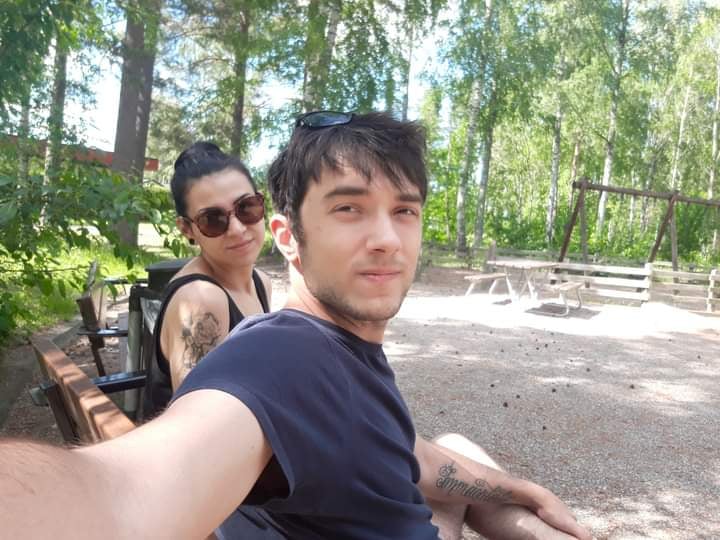
Marin Relja from Darda (25) and Vedrana Maksimovic from Sarvaš (24) swapped Slavonia for Västerås in June of 2019. We interviewed them to find out some of the ways life compares when you move from Osijek to Sweden.
Marin: We lived with parents when we were back in Osijek. A lot of the time we spent at Vedrana's parents, we had our own space there, which was great, but we didn't have total freedom. There were always quite a lot of other people around and when you are surrounded by family, certain responsibilities are put on you. It's much easier to live by yourself.
Vedrana: If we'd stayed in Osijek, probably we would have needed some support from our families so we could live together, independently. Here, we can do that by ourselves.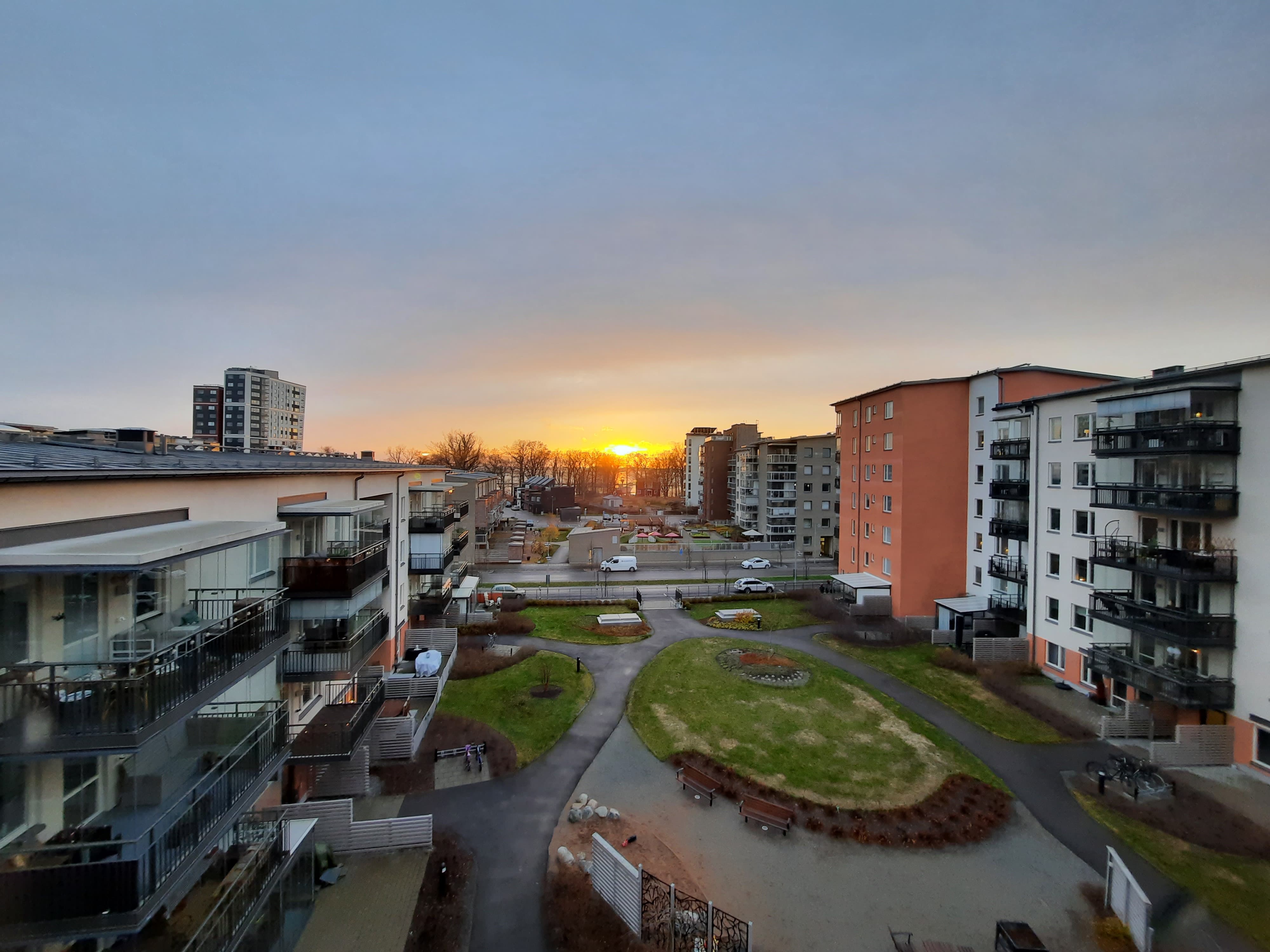 Marin and Vedrana's new neighbourhood, in Västerås, Sweden
Marin and Vedrana's new neighbourhood, in Västerås, Sweden
Why did you move from Osijek to Sweden?
Marin: There are lots of different reasons - opportunities, money, the church...It's cold. And there is a lot of snow. I like winter a lot more than summer. If it's cold, you can always put on more clothes. If it's too hot, what can you do?
Vedrana: I hate the winter and cold weather, actually. Marin wanted to come here. And my brother was already here. Maybe because it's totally different? Marin wanted to go to Ireland or Sweden. But, Ireland is a religious country, Catholic, like back home. We didn't want to live in another place like Croatia. I was here visiting, one year before we came, and it was -15. Freezing. Right now it's not so bad, around 4.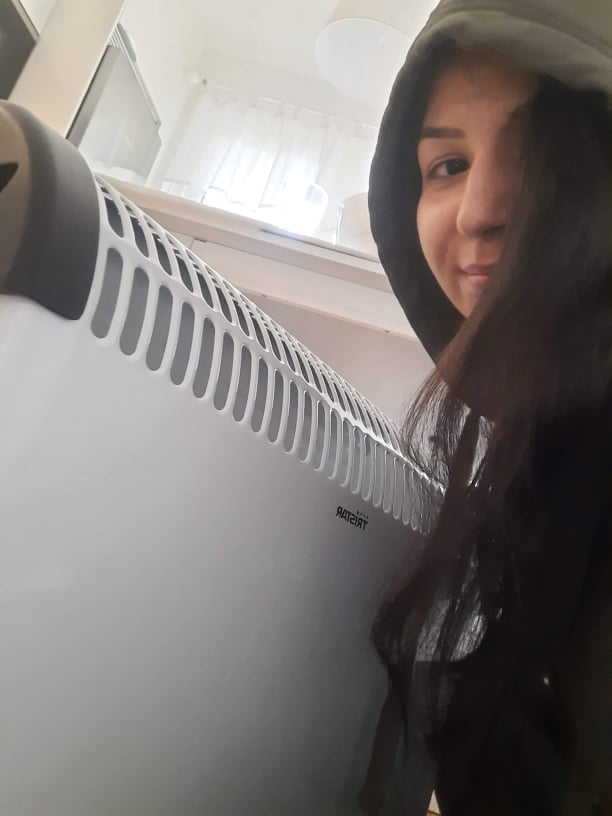
Vedrana doesn't like the cold. Marin's dream job is riding snowmobiles all day.
Marin: It can be -10 here but feel like -30 because the winds are sometimes very strong. Last winter wasn't so bad, but if you're on the windy side, it can feel really cold. I wear Christmas socks a lot. They're very warm. I have many pairs.
I saw you also have many pairs of papuče (slippers) by your front door. Why?
Marin: The tradition isn't going to die (Vedrana laughs). We brought that tradition with us from Osijek to Sweden. Most of them are for us, so we can wear different pairs, but some are for guests, although we rarely have any. We just have extra papuče that we don't use.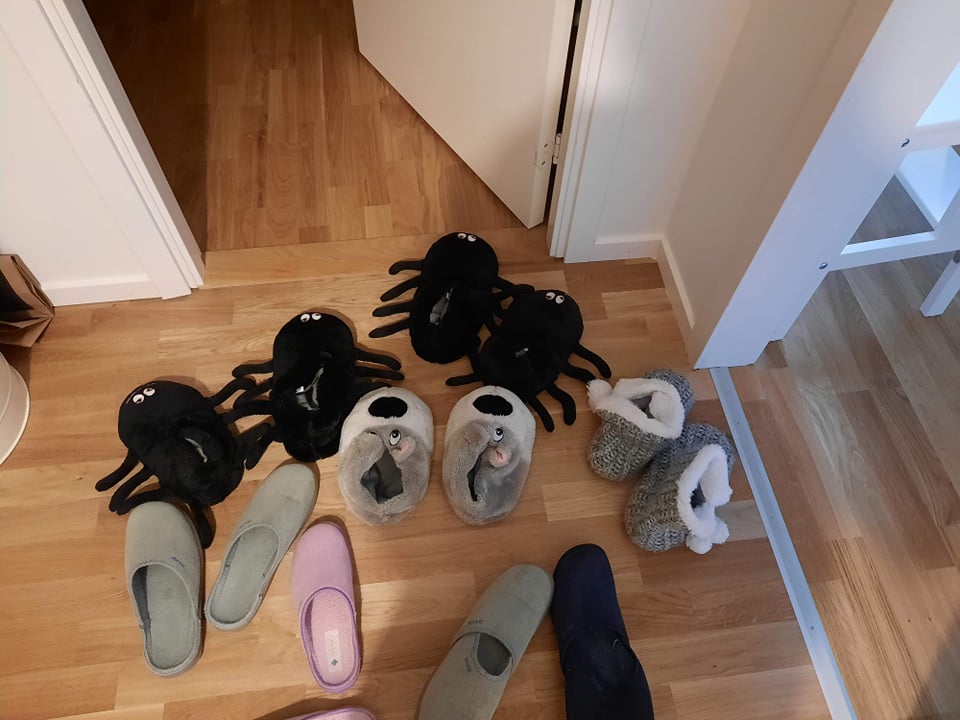 Croatians overseas: a tsunami of papuče
Croatians overseas: a tsunami of papuče
Vedrana: Our apartment here costs around 800 Euros per month. That includes water and payment for cleaning of the communal areas of the building. We pay extra for electricity, wifi and home insurance. Home insurance is mandatory. It costs around 100 Euros a year.
Marin: We came to Västerås because Vedrana's brother was here, but now he moved to another place. He helped us find an apartment when we first arrived. It's difficult to arrange an apartment from Osijek to Sweden with an agency - you actually have to be here. It's not something we could do online before we came.
Vedrana: We were saving for around a year before we came, in preparation. We got around 30, 000 kuna. We spent it on travelling here, start up and the first apartment. My brother's wife worked in a company here and she made a recommendation for me and I started to work there. Then, I made a recommendation for Marin. Everything here is made with recommendations. Everything. Our company offers services. Anything you could think of. Home services, customer services. Sometimes you might be sent gardening, babysitting, fixing something in someone's home, painting a room, window or home cleaning, helping someone move house. Sometimes the client is a private individual, other times it's a company.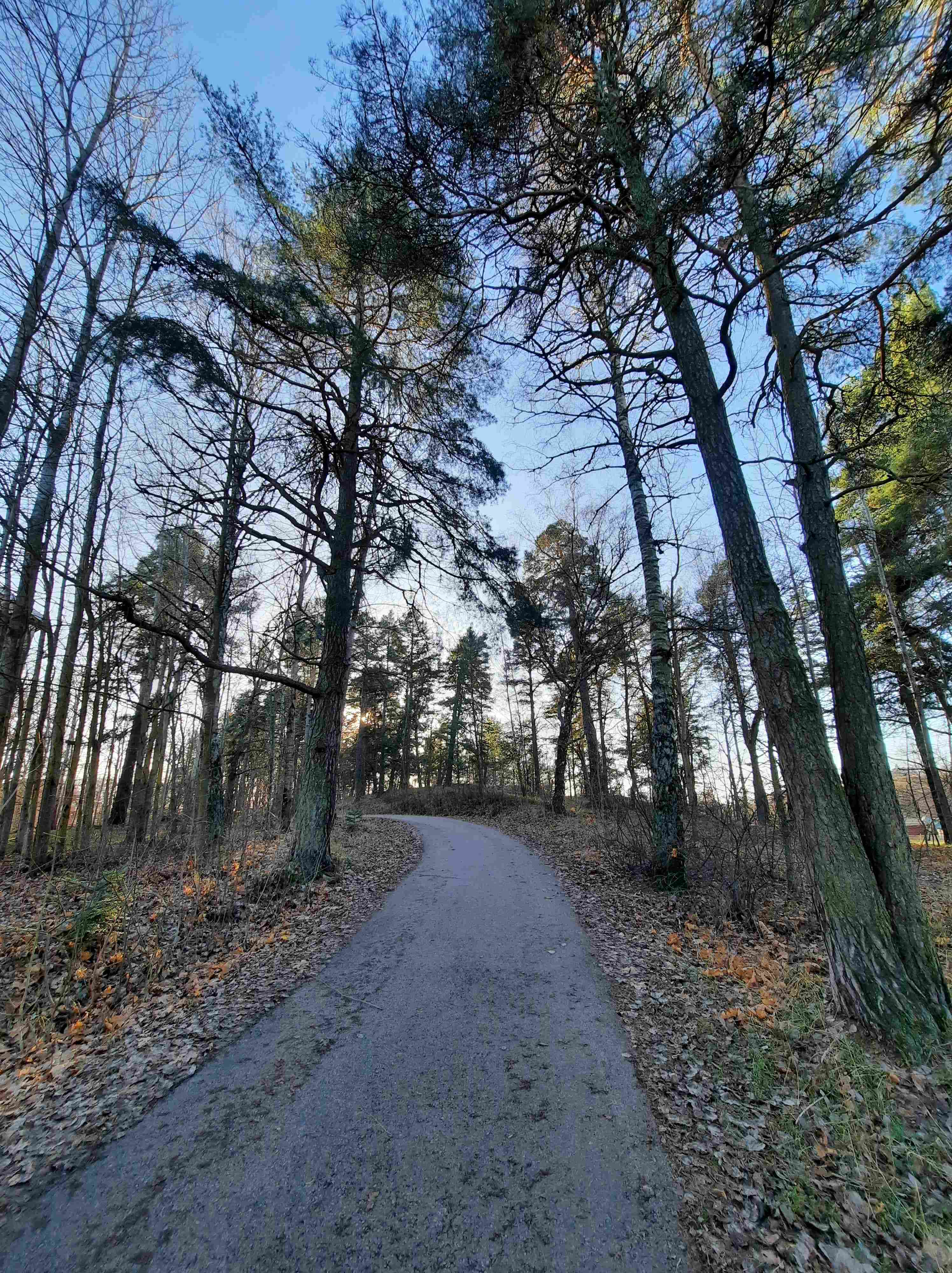
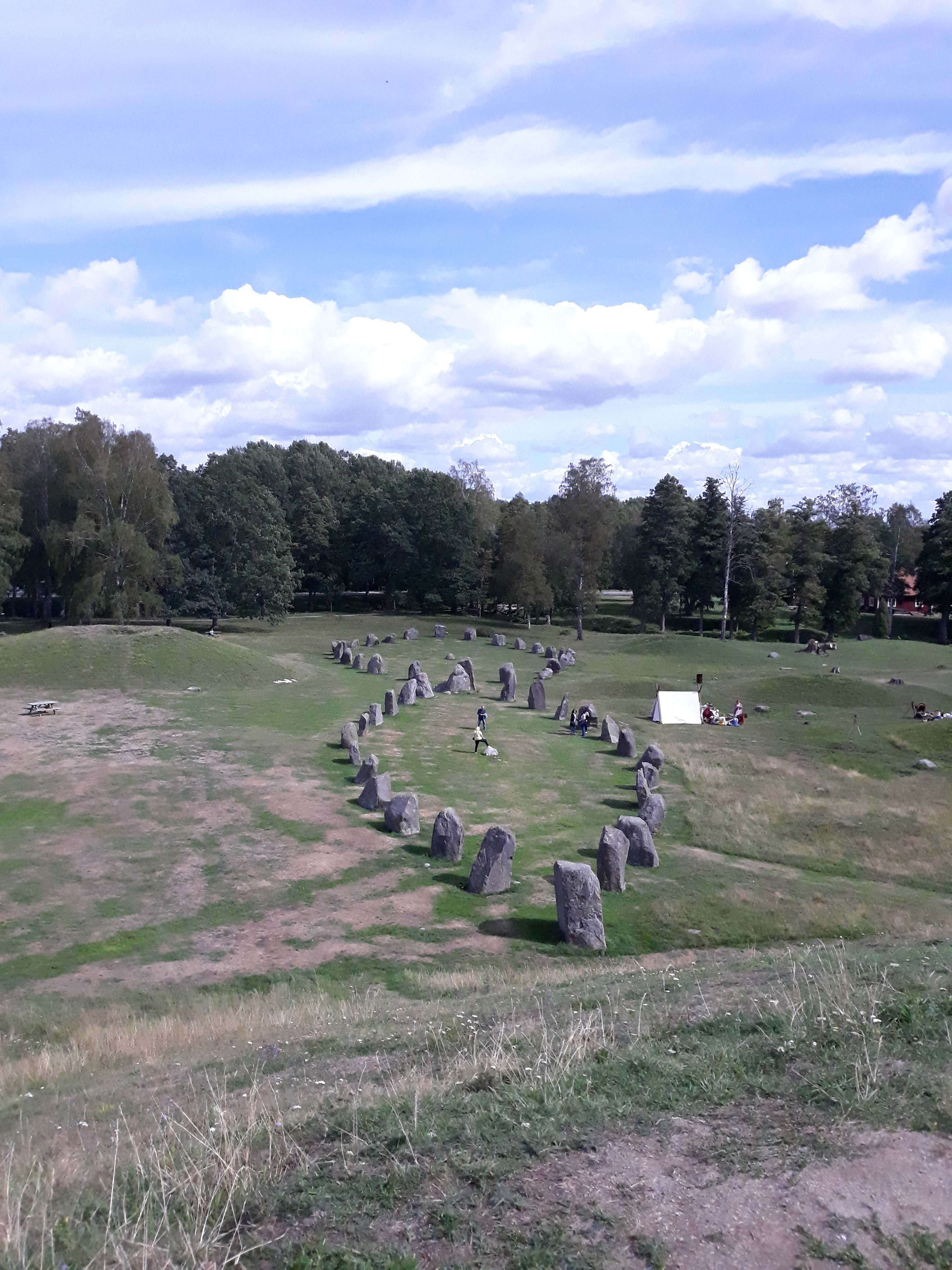 "We like going for walks here. The scenery is very different to Slavonia" Vedrana
"We like going for walks here. The scenery is very different to Slavonia" Vedrana
Vedrana: We don't work full time here. We work around 75% of a full-time job. So, it's part-time. But still we have enough money to live and much more than back in Osijek. In Osijek, for working in the store full time, I earned 400 Euros per month. As a waiter, Marin earned around 600 Euros per month, depending on tips. Here, after tax, we earn around 1200/1300 Euros each. Sometimes Marin earns more because he can drive and so he can be sent outside of the area to do jobs. He is paid for his driving time.
Vedrana: Around one week ago, I bought myself some boots for 200 Euros. I would never have been able to do something like that in Osijek. When we went food shopping in Osijek, we always went with a list. If you didn't have a big salary, like us, you have to count what you are spending. Here, we don't do that. If I see something that I like, I will buy it.
What jobs would you like to be doing there?
Marin: I would like to work as a graphics technician or as a waiter again. I like being a waiter, I like working in hotels. Of course, my dream job would involve driving a snowmobile all day.
Vedrana: I would like to be a care assistant, but I need to learn Swedish first and then go to school.
Marin: We had nothing when we arrived. We had two small chairs and we borrowed a thin mattress from her brother that we slept on. We bought pans, pots, plates, glasses and knives and forks first. Next, we bought a table and chairs. Then, we acquired a bed, we bought a sofa. After that, we stopped buying anything until we found an apartment that we could see ourselves living in for a long time. That's the one we are in right now, it's our third apartment here.
Did you meet any other people from the Balkans in Sweden?
Vedrana: Yes. I met a lady in an apartment agency. She took our ID details to check our backgrounds and when she saw our names, she said “Maksimovic? Where are you from?”, in English. When we said “Croatia”, she said “Pa mozemo i ovako pricati (well, we can talk like this)”. She was from Sarajevo. She came here 10 years ago. Another time, I went to a woman's apartment to work for the day. As a client, she already had my name and details. When she opened the door, I said hello and asked if she spoke English. She replied. “Možemo pričati na našem”. Her name is Elena and she is from Belgrade. We still see her sometimes, she is nice. She's been here around 20 years.
How difficult it is to learn Swedish?
Vedrana: It's really hard.
Marin: It's easy. I started when we were still in Croatia, just to get some basics. A few months ago, we started school. I learned English and German in both elementary and secondary schools. You can see the associations of those languages with Swedish.
Vedrana: The accent is difficult. You must make different sounds with your mouth than we have in Croatian. It's a very beautiful language when you hear it. It's not like German.
Marin: They sound funny when they talk. It sometimes sounds like they are singing.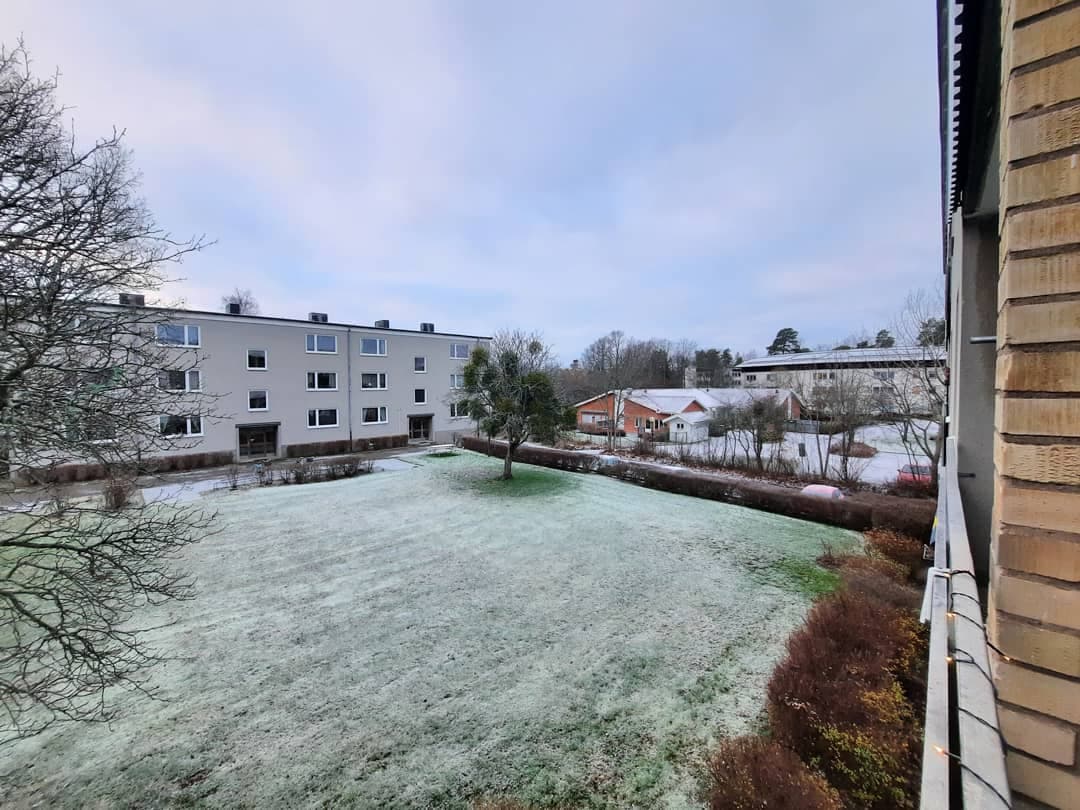
Would you move to a different city in Sweden if the right job opportunity was offered to you?
Vedrana: Yes. I would like to go to Gothenburg or Stockholm. It's more urban there, more to see and do, and more opportunities.
Marin: I would like to go to the north of Sweden. It's even colder and more remote there. And more snowmobiles. But, they only do mining there, and I don't know how to mine, so I'm not sure if I could find something there.
How different is the food in Sweden?
Vedrana: We don't eat meat, so we got used to cooking for ourselves at home before we moved from Osijek to Sweden. So, we haven't noticed a big change in what we eat. We do both eat fish. The kinds of fish you can buy here are really different. We sometimes eat salmon steaks. You never really saw those much in Osijek. Salmon is not so expensive here like it is in Croatia.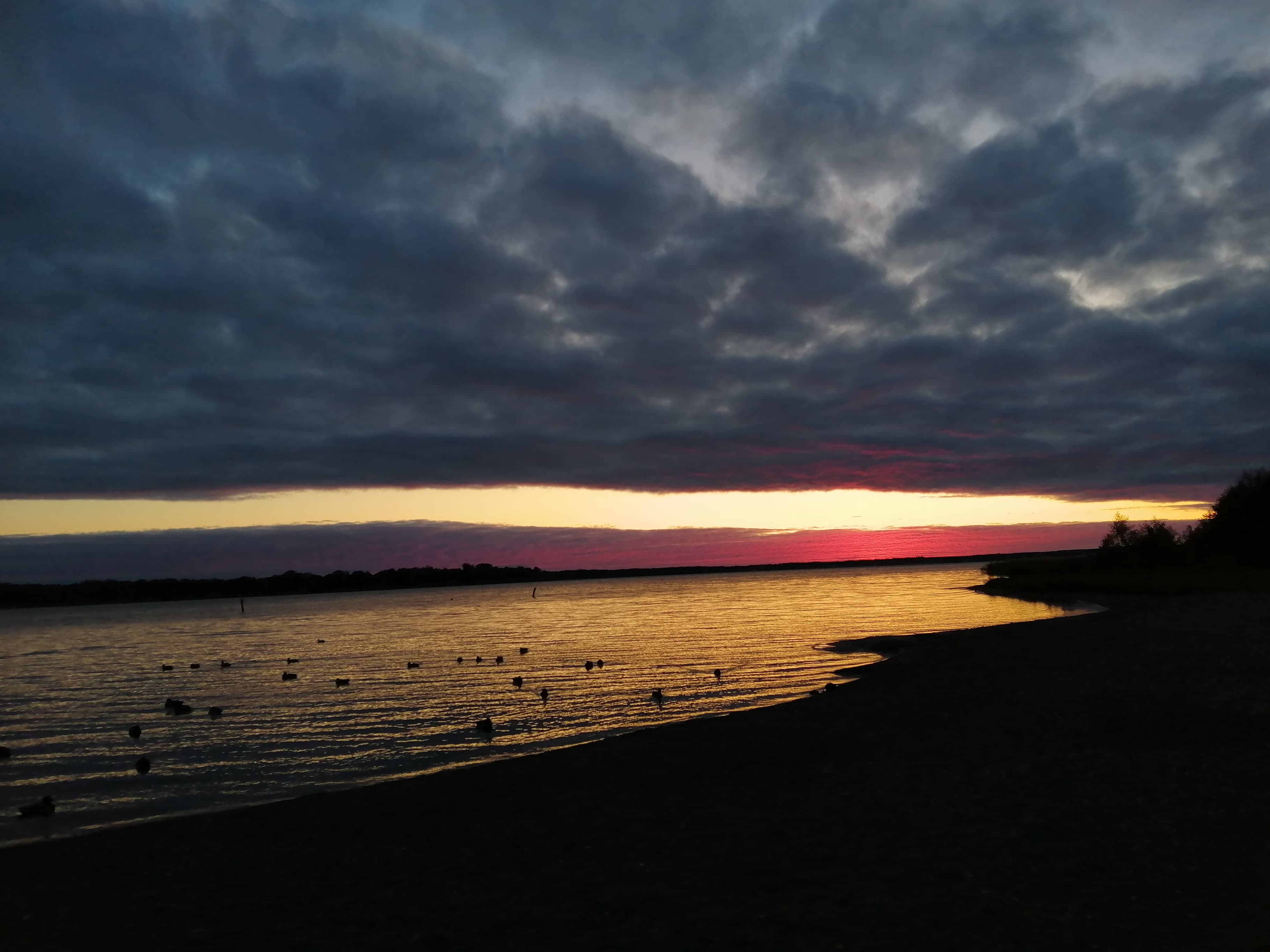 "In the summertime, it is light all the time. The sun comes up around 3am and stays up until 11pm, but there is light all the time. I like it. I don't have trouble sleeping through it. Marin did, at first. In winter, there is no sun. It gets lighter around 9am and that lasts until around 3pm. But, there is no sun. It's like that from late October until March" Vedrana
"In the summertime, it is light all the time. The sun comes up around 3am and stays up until 11pm, but there is light all the time. I like it. I don't have trouble sleeping through it. Marin did, at first. In winter, there is no sun. It gets lighter around 9am and that lasts until around 3pm. But, there is no sun. It's like that from late October until March" Vedrana
Marin: People are a lot calmer here. Driving is different. There are not so many cars on the road in Osijek, but here, nobody sounds their horn at you or sticks their middle finger up at you because they don't like the way you drive. Nobody seems to be in a rush.
Marin: Alcohol is expensive here if you go to a bar or club. In Osijek, you pay maybe double the price for beer in a bar that you would in the supermarket. Here, the beer you buy for 15 kronas in the store you would pay 70 kronas for in a bar. But, it's not so expensive to go out if you work full time.
Vedrana: Here, you cannot buy alcohol in a store or a supermarket like back home. You have to go to the special Systembolaget store to buy it. You must be 20 years old, it closes at 8pm in the evening, it closes at 3pm on Saturday and is closed on Sunday.
Marin: When you move from Osijek to Sweden, you can meet people from all over the world. It's not like Slavonia. We have neighbours from India. We speak together in English. We have a friend from Sri Lanka. I met a guy at work who is from Africa.
Do you ever regret moving from Osijek to Sweden?
Marin: Not sure yet. We don't regret it, but sometimes we feel nostalgic. But we realise that is amplified by this COVID situation – there's just not been any opportunity to travel back home and visit family and friends.
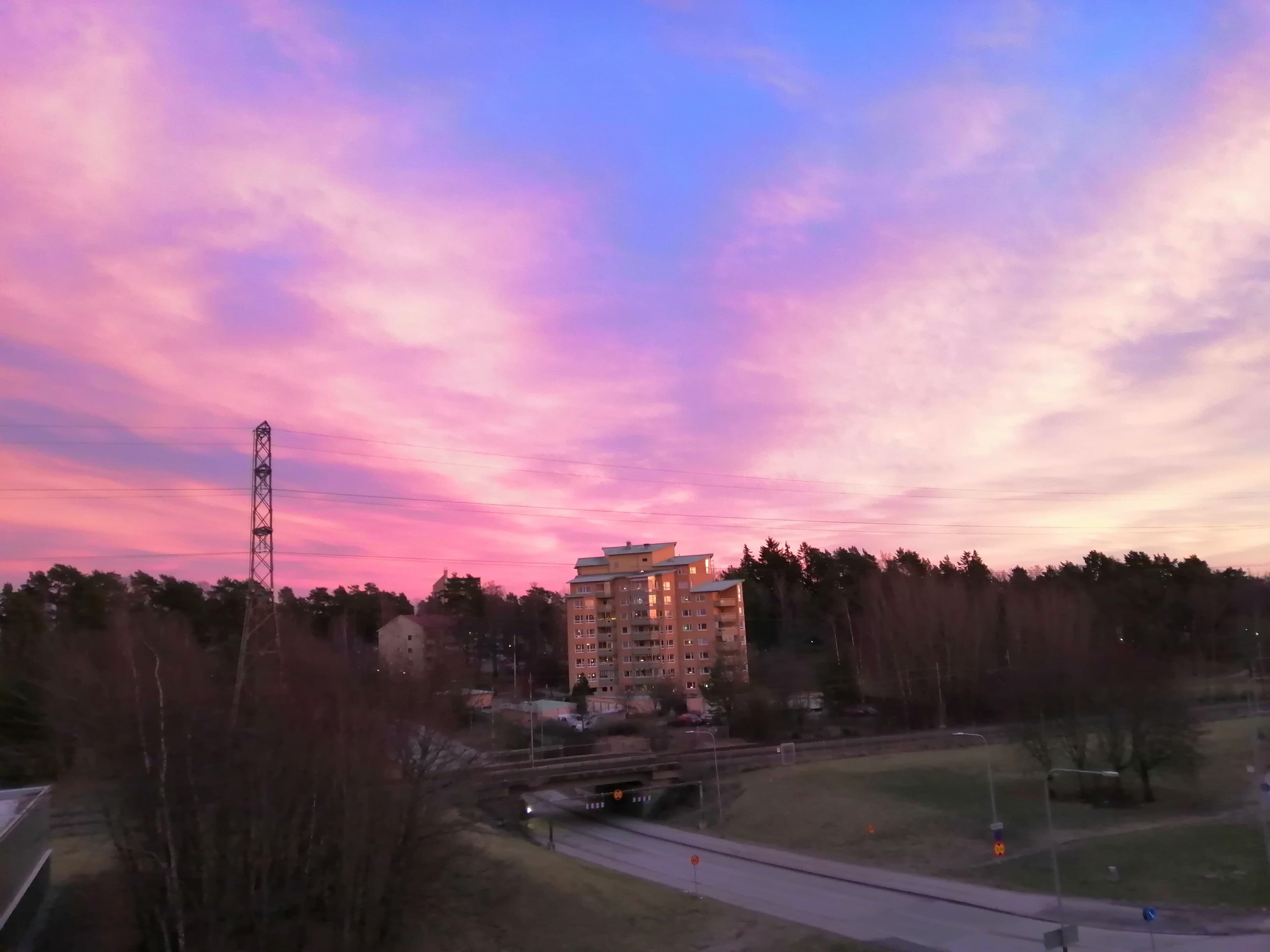
Reality TV Star Jasmin Raises Orphaned Fox as Family Pet
December 1, 2020 – 22-year-old Jasmin Kunišinac, a former contestant on the reality TV show Farma, is raising an orphaned fox in his family home. The pair are local celebrities in Vinogradci, near Valpovo, Slavonia, thanks to their walks around the village, and also quite the hit on social media too
It's not unusual for Slavonian people to feel connected to the land and nature which surrounds them. The rich soils of the Pannonian basin in east Croatia often provide an occupation for at least one family member. Certainly, these soils will put food on the family table. The family of 22-year-old Jasmin Kunišinac, who live in Vinogradci, just west of Belišće and Valpovo, is no different. Jasmin's always felt connected to the land.
You could tell as much from Jasmin's 2018 appearance on the Croatian reality TV show, Farma. Upon entering the show, he was described as not lacking experience of life in a rural village. Viewers were told that, in his free time, Jasmin liked to ride, fish, hang out with friends and help abandoned animals. He said his favourite animals were horses and foxes. Jasmin and Odi
Jasmin and Odi
Since early 2020, Jasmin's fondness for foxes has been evident for the 250 or so residents of Vinogradci to see, as he has taken on responsibilities for an orphaned fox. Villagers see him taking the fox, Odi, for walks around Vinogradci on a lead.
Vinogradci is focussed around three small streets, down which Jasmin and Odi walk. The houses are narrow at the front, elongated and stretching back away from the street. Behind them, long gardens stretch even further, often containing vegetables, fruit trees, animals or additional buildings for food production. The name of the settlement itself means 'vineyards'. The quiet streets of Vinogradci, where Jasmin takes his fox Odi for walks © Grad Belišće
The quiet streets of Vinogradci, where Jasmin takes his fox Odi for walks © Grad Belišće
It is exactly the sort of land where wild foxes like to roam. By those who keep chickens on their land, these foxes are not always welcome.
Jasmin and his cousin found Odi by the side of the road at the beginning of the year. The pair had been cycling to their grandmother's when they came across the fox cub who, at that time, was no more than a couple of months old. They found the remains of Odi's mom not far away. She had been shot.
The pair decided to take Odi home and fed the fox with milk from a bottle, in much the same way you might a baby child. Jasmin's mum was less than thrilled. Her's is a household already quite full. As well as mom and dad, Jasmin has three sisters and a brother at home. And that's without even mentioning the other animals they have.
Thankfully, as Odi has become domesticated, he seems to have fit in with family life. He plays with the Kunišinac's Rottweiler and even their chickens seem to have got used to the sight of him. Jasmin's six-year-old sister particularly loves playing with Odi, who is more lively as the daylight begins to fade - foxes are nocturnal animals.
Odi and Jasmin are not only celebrities thanks to their walks around the quiet streets of Vinogradci. Thanks to folks' familiarity with Jasmin on the reality show, Odi has become quite the hit on social media. In addition to Jasmin acquiring more followers on Facebook thanks to the fox's arrival, Odi has attracted some 18,000 views on TikTok.
This is not the first fox that the Kunišinac family have taken in either. Jasmin's dad found one while he was out fishing, which they cared for before he left to be cared for at the zoo in Nasice. Given the foxes fondness for the fields around Vinogradci, there's no telling if Odi will be the last fox to be taken into their home. Who knows, the Kunišinac family and their foxes might create a long-running rural series as popular as Farma.
All photos taken from Jasmin Kunišinac Facebook
Slavonia Students Spot 300 Spelling Mistakes In Names of Public Places
November 21, 2020 - How difficult is it to learn Croatian? Slavonia students from one high school learned it's really not so easy for people to correctly use their own language
How difficult is it to learn Croatian? Well, it's pretty difficult. Croatians know this best of all and will be reasonably impressed if you make any advances in trying to speak their language. A professor of linguistics from Zagreb University once told this writer that to be able to regard yourself as wholly proficient in the Croatian language, you would have to study it to no less than university level. Naturally, not every speaker of Croatian has done so.
Slavonia students from a high school in Slavonski Brod were recently tasked with looking for mistakes in the use of Croatian language in public places. So complex is the Croatian language, spelling and grammar mistakes are commonplace. The teacher assigning the task, Vesna Nosić from Matija Mesić high school, was no doubt confident her students would uncover some mistakes. However, the grand total of 300 spelling and grammar mistakes the Slavonia students found is possibly more than was bargained for. Particularly as those found were all assigned to public places.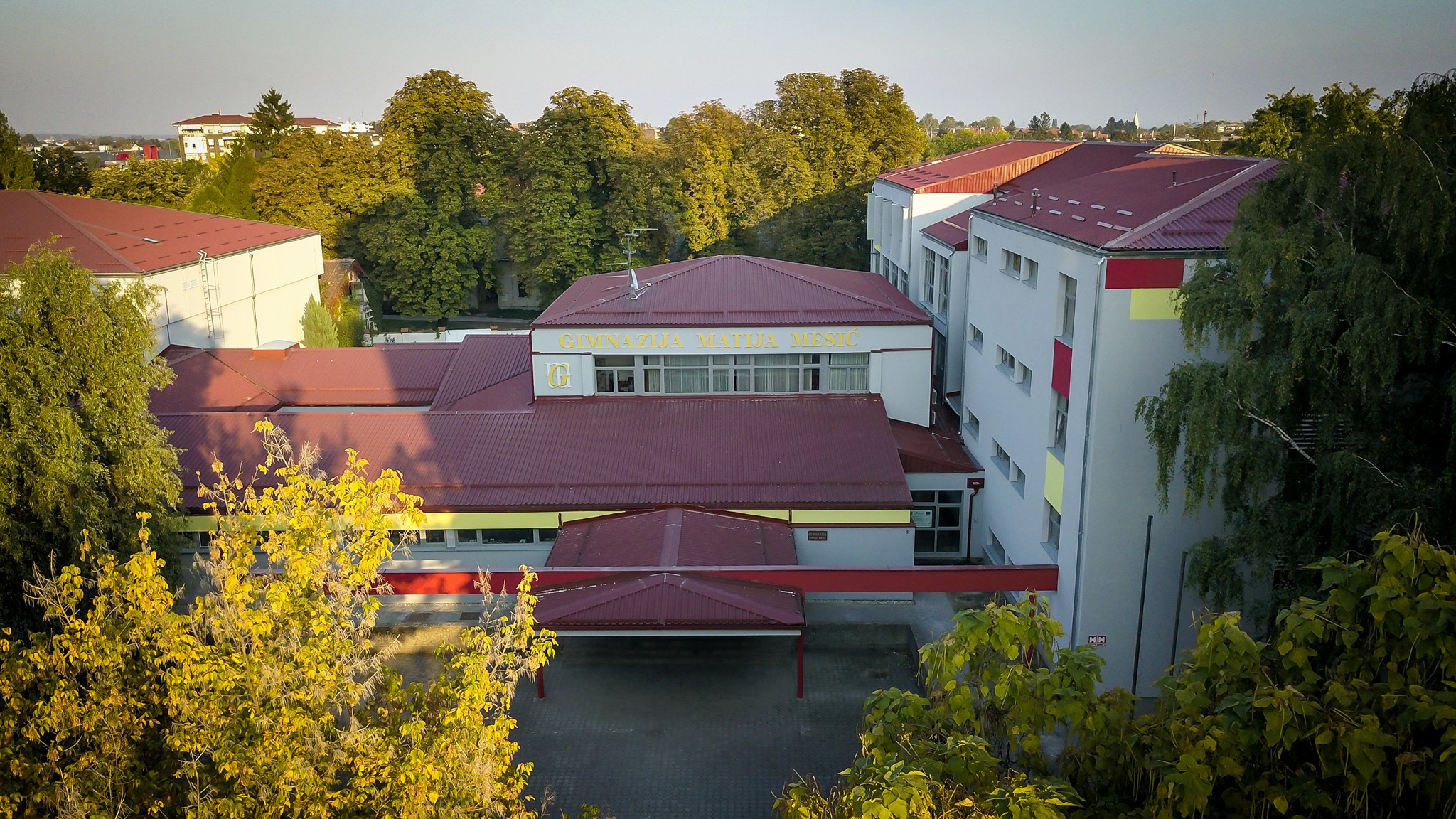 Matija Mesić high school in Slavonski Brod, where Slavonia students made their findings © Matija Mesić high school
Matija Mesić high school in Slavonski Brod, where Slavonia students made their findings © Matija Mesić high school
The misspelling or incorrect translation of food items on a restaurant or tavern menu is a regular cause of amusement in Croatia. But, the mistitling of public places - streets, squares, companies, monuments, traffic signs and even schools – is perhaps more surprising. These are places you walk past every day.
The Slavonia students were given the high bar of the official standards of Croatian language set by the Institute of Croatian Language and Linguistics. Their teacher, Vesna Nosić, has published their findings in the popular science journal Hrvatski jezik (Croatian language), which is published by the institute. Croatian language is something of a national obsession in Croatia, its acceptance as the official language very closely linked to the country's struggle for autonomy. For most of its history, the lands of modern-day Croatia were controlled by empires for whom Croatian was not their language. The use of foreign tongues has been imposed on the population of Croatia for centuries.
The most common mistakes made in the Croatian language are related to the incorrect use of the sounds ć and č, đ and dž. The letters here come from Gaj's Latin alphabet, devised by Croatian linguist Ljudevit Gaj in 1835. It is the Latin script used across the region in which to write the similar languages of Bosnian, Croatian, Serbian, and Montenegrin (in Bosnia, Serbia and Montenegro, the Cyrillic alphabet is used as well as Gaj's Latin alphabet).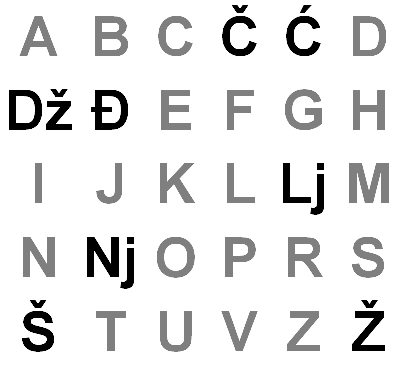
The contemporary version of Gaj's Latin alphabet (it originally contained Dj, which was replaced by đ. This alphabet ihe easiest part of learning Croatian - within 15 minutes, almost anyone can correctly pronounce all Croatian words by using this. In comparison to the Latin alphabet used by English speakers, the letters q,w,x,y are omitted. Instead, we get the additional č, ć, dž, đ, lj, nj, š and ž. Looks difficult? It isn't. Almost all of these sounds exist within the English language. Except for lj which, to English speakers, is torturously missing some kind of vowel © Albatalad
Mistakes between the ć and č or đ and dž sounds are understandable if you can pronounce Gaj's Latin alphabet. And anyone can. The easiest part of learning Croatian is Gaj's Latin alphabet – all of the sounds exist within the English language, all of the letters are always pronounced in exactly the same way (unlike English). The difference in sound between ć and č or đ and dž in spoken Croatian is difficult to perceive if you are not a native speaker (often, even if you are!)
Some of the mistakes found by the Slavonia students are perhaps more forgivable – the standard of Croatian their comparisons was made against is rigid. Thus, pekarna (bakery) instead of pekarnica, or dućan (shop) instead of trgovina were classed as mistakes, but are actually in everyday use on streets across Croatia.
Other mistakes found relate to grammar, spelling and the misuse of upper case or lower case lettering. For instance, Ulica Pavleka Miškina should be written Ulica Pavleka Miškine (the word ending changes to denote it is the street of Pavlek Miškina), Crkva Gospe od brze pomoći, should be crkva Gospe od Brze Pomoći; Muzej Brodskog Posavlja should be Muzej brodskoga Posavlja and Šetalište Braće Radić should be Šetalište braće Radića (denoting it is the promenade of the Radić brothers).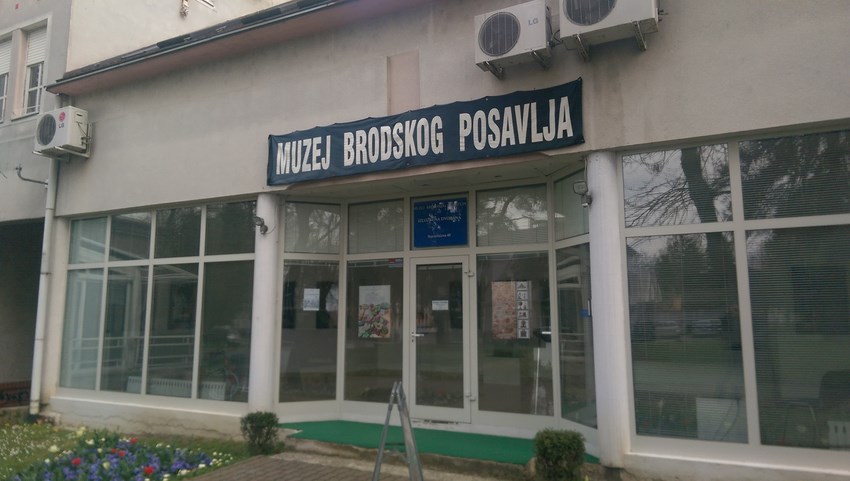 Not sure which words should be in upper case or lower case in Croatian? Write everything in upper case - problem solved! © Slavonski Brod Tourist Board
Not sure which words should be in upper case or lower case in Croatian? Write everything in upper case - problem solved! © Slavonski Brod Tourist Board
Sitting to one side and watching how others do something, judging them, then informing them they are doing it incorrectly is not the most pleasant way to occupy your time. However, for the purposes of this study, this not-uncommon activity in Croatia is exactly what was asked of the Slavonia students. However, as noted in today's coverage of this story in Index, there is a great saying in Croatian that serves as a response to any unwanted judgments coming from those on the sides - “clean up the trash in front of your own doorstep before you discuss that which lies in front of your neighbour's”. And, that's exactly what the Slavonia students did – and found out that the name of their own school was spelled wrong.
Museum of Becarac, Pleternica, Celebrates Slavonia Folk Song
November 7, 2020 – Protected by UNESCO, the unmistakable Slavonian folk song style will get deserved attention at the new Museum of Becarac in Pleternica.
There are lots of pretty little towns in Slavonia like Pleternica. The average outsider often has no way of distinguishing between them. But, Pleternica is determined to stand out. In a smart and considered move, they've decided to become synonymous with a UNESCO-protected element of Slavonian and Croatian culture - Bećarac.
Last year, Bećarac Square was opened in Pleternica. Soon, the town will become home to another symbol of heritage preservation – the Museum of Becarac. The Museum of Becarac will be located right next to Bećarac Square in the center of the town.
Bećarac is a traditional and humorous type of folk song originally from Slavonia. It has an unmistakable sound. It is characterised by a rhyming, call-and-response type of delivery and is performed acapella or accompanied by the traditional Slavonian folk music style of tamburitza. The melody of Bećaraci remains constant, only the song words differ as it continues or is again performed. In this way, Bećarac is more akin to the traditional storytelling aspect of folk music than it is an individual song.
The first verse is sung by the choir leader and forms a logical thesis; it is repeated by the choir of gathered men. The second verse is a humorous antithesis, also repeated by the choir (but often broken by laughter). Bećarci is usually performed at the peak of a party as a drinking song after the crowd is sufficiently warmed up by wine and music. A series of bećarci can last indefinitely. Their words are often made up spontaneously. The creator of the lines of lyrics can draw on many different sources of inspiration - recent happenings, local stories, reputations, past songs and much more. The style is embraced by almost every band who you will ever hear play tamburitza music - young, old, traditional, or modern. Thus, the subject matter and language used can vary greatly, as does the appeal of the humour and the lyrics. If a writer creates a popular motif, it can be remembered, repeated and even replied to at later instances. It may travel outside of its source of origin in the same way traditional folk music always has.
Bećarac was declared an intangible part of cultural heritage by UNESCO in 2011. The name bećarac comes from the word bećar, meaning reveller, and the word is often used to describe young Slavonian bachelors.
Museum of Becarac to present Slavonian heritage in a modern way
As Požeški vodič reports, the Museum of Becarac project was presented at the beginning of 2020. The 1400 square meters that the Museum of Becarac will occupy has already been designated during the construction of Bećarac Square.
Below the stands of the square, it is planned to house a souvenir shop and a cafe. The Museum of Becarac itself will be built on two floors. The first is already visible when you walk through the passage under the stands. The larger part of the museum will be located underground, in the basement space. The museum is expected to open at the end of 2021.
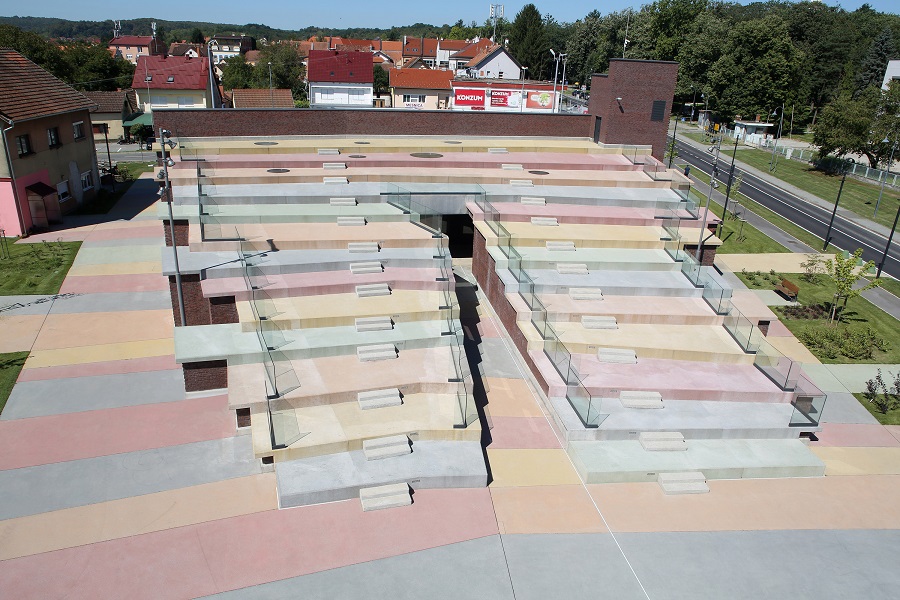
Bećarac Square in the center of Pleternica, under whose stands the Museum of Bećarac will be located, is designed as a reminiscence of golden Slavonian fields and sunny hills / D. Fabijanić, The City of Pleternica
"The Museum of Bećarac will be a presentation of heritage with all modern techniques: music, video, and visual recordings, and at some point, you will even have the feeling that you are running through wheat fields," said Antonija Jozić, the Mayor of Pleternica.
Apart from Slavonia, the Croatian regions of Baranja and Srijem are also home to bećarac, and it belongs to them equally. Furthermore, it is also performed in parts of southern Hungary and Vojvodina. It is a part of traditional culture throughout much of the Pannonian Basin. Like its UNESCO protection, its continued performances seek to preserve a special Slavonian tradition. This dedicated museum will also contribute to doing just that.
"Folk costumes and other objects will be exhibited in the museum, too, because it is very important, but we will use other methods to contextualize these objects. First of all, this is not a museum of folk costumes, but a museum of folk song bećarac. And it is performed. So we have to figure out how bećarac will be in focus all the time, but then we will, of course, talk about other anthropological, ethnographic, and historical phenomena related to bećarac," explained Dragana Lucija Ratković Aydemir, founder and director of Muza company which participated in the presentation of the museum project on January 13, 2020.
The Museum of Bećarac is part of a large project called "Svijet graševine" (The world of graševina), which is being carried out by the City of Pakrac, with the City of Pleternica as one of the partners. Out of the total 65.7 million kuna of the project, 30 million kuna is intended for the Museum of Bećarac, while the rest is intended for the City of Pakrac's "Spahijski podrum" project and branding.
The rich city cultural treasury
The Museum of Bećarac is designed as an extension of the tourist offer of the small Slavonian town. Pleternica has about 11,000 inhabitants, but every year, one event attracts as many as 100,000 pilgrims there. It is the Novena of Our Lady of Tears, whose sanctuary is located in the heart of Pleternica and for which the city of Pleternica is otherwise known. It is held every year from 23 to 31 August.
The June Days of Amateur Creativity called LIDAS are also important for Pleternica, during which the splendor of the cultural treasury of this region is presented. The children's tamburitza festival "Cvjetići glazbe" (Flowers of Music) is held on those days and is the only one of its kind in Croatia. Due to the parish church of Sv. Nicholas, who is the patron saint of the city, Pleternica City Day is celebrated each year on December 6th.
Pleternica has been looking for a "trigger" for a long time to help them attract even more tourists, and they finally recognized it in bećarac.
"Many years ago, at the suggestion of one of my fellow citizens, we protected the name of the Museum of Bećarac at the Intellectual Property Office because we felt that it could be a good story that would bring tourists to Pleternica. As European funds were available to us, we developed the project and, now we are in the phase of completing equipping the museum. I believe that from the end of next year we will be able to count the tourists who will come to Pleternica," the mayor Jozić told Večernji list.
An interpretation center rather than a museum
The museum currently produces all video and audio materials, applications, art installations, and procures all exhibits, and to consistently convey the spirit of Slavonian tradition to visitors, preparations by museologists, experts, and ethnologists are indispensable.
"The museum we are working on is not a classic museum, it is more of an interpretation center, that is, a visitor center. We will show all tourists who come what bećarac is and what Slavonian life is. And then, of course, when they visit the museum, we hope that they will visit all our other beauties, from wine roads and cellars to family farms," says Antonija Jozić.
First Gay Marriage Held in Kutjevo, Heart of Slavonia
November 5, 2020 - The first gay marriage held in Kutjevo was between locals from the area of Čaglin Municipality.
As the city clocks struck midday, two men, locals from the area of Čaglin Municipality said goodbyes to their single selves and embraced their future together as husband and, well, husband. Their affirmations were heard in front of the registrar of Kutjevo and thus, officially, they became partners in a same-sex marriage. It was the first gay marriage to take place in Požega-Slavonia County.
Portal Požega.eu reported that the intimate marriage ceremony of the 47-year-old and his 32-year-old partner took place over recent days, far from the gaze of the public. The ceremony was a quiet and private affair. In rural areas like Požega-Slavonia County, such marriages are not always met with widespread approval. The city registrar reported that this was the first gay marriage they had been asked to witness, despite having been in the job for many years.
Though this may be the first gay marriage to take place in Požega-Slavonia County, hundreds of same-sex marriages have concluded in Croatia since 2014, when the Life Partnership Act came into force. In the time since then, male same-sex marriages in Croatia have been slightly more common than female ones. The largest number of such marriages took place in Zagreb. From published figures outside of Croatia, where same-sex marriages have been more commonplace over a longer period of time, same-sex marriages are frequently more stable with fewer ending in divorce compared to traditional marriages.
Life partnerships in Croatia
The first same-sex marriage in Croatia was concluded in August 2014, and despite the great interest of the public, the two male partners managed to keep the wedding a secret. Just like the couple from Kutjevo. The couple married in the first of the ceremonies in Croatia only went public with details just last year.
"I was very nervous in those days, it was a historic thing after all. If we could not have done it in Croatia, we would certainly move to a country where it was possible," one of the spouses, Ivan Zidarević, told 24sata, adding that society has changed for the better with the change in the law.
Zidarević said he believes that Croats are tolerant of gay couples. Their marriage ceremony in 2014 was witnessed by two registrars, godparents, several friends, but also the then-Minister of State Administration, Arsen Bauk, initiator of the Croatian Life Partnership Act. Bauk gave the couple a symbolic gift – a pair of ties.
According to the Law on Life Partnership of Persons of the Same-Sex, a life partnership is a family community of two same-sex persons concluded by the competent authority (a registrar). The process of concluding a life partnership in Croatia is very simple. It is necessary to report to the registrar, who then checks whether the preconditions for concluding a life partnership have been met and takes a statement on the choice of surname. After that, the time and place of the ceremony are agreed, which, along with the registrar and partners, takes place in the presence of the godparents.
Happiness despite condemnations
At the beginning of this year, the Constitutional Court decided that same-sex couples in Croatia have the right to be foster parents under the same conditions as everyone else. However, the current constitutional definition of marriage in Croatia does not include same-sex families. A change to legally recognise married same-sex partners in this way was this year demanded by the participants of Zagreb Pride, held on September 19, 2020. Pride organisers said that without a change in the recognition, state authorities are still restricting the rights of gay people and making them second class citizens.
In many EU countries, and more so in Zagreb here in Croatia, same-sex marriages are acceptable and almost every day. But, in rural areas such as Požega-Slavonia County, Kutjevo, and other places like these, such marriages are still of great interest and not universally embraced.
Although they live in an environment where they might encounter condemning views, the happy couple from Požega-Slavonia County decided to legalize their relationship. In comments on Facebook, people wished them luck, and one commenter jokingly wrote: "If they didn't make a toast with Graševina, they didn't do anything. Congratulations anyway!"
For the latest travel info, bookmark our main travel info article, which is updated daily.
Read the Croatian Travel Update in your language - now available in 24 languages
Move Your Borders, Head to Eastern Croatia: Osijek-Baranja County Tourist Board Launches New Promo Videos
October 31, 2020 - Move your borders, head to eastern Croatia! - is the slogan of the Osijek-Baranja County Tourist Board as part of the phenomenal #HeanOnEast concept.
Goran Rihelj of HRTurizam reports that the story was created last year for the needs of holding Croatian Tourism Days in Slavonia, and the great news is that the event has turned into a brand concept that continues. Thus, as a continuation of the story, an introductory slogan was created. The event was also held this year, but of course, on a much smaller scale due to the epidemiological situation.
New short promotional videos have now been recorded, promoting active and wine tourism and the gastronomy of Osijek-Baranja County.
Hedonism without borders - Colors, smells and tastes / #HeadOnEastCroatia
Hedonism without borders - Wine postcards / #HeadOnEastCroatia
Hedonism without borders - active in nature / #HeadOnEastCroatia
Goran Rihelj of HRTurizam emphasizes that without the activation of Croatian travel agencies, it is difficult to initiate a more serious focus on continental and rural destinations. The coronavirus crisis highlighted the need for nature, new destinations without large crowds, and a focus on the continent and rural areas.
The whole of Slavonia, Baranja, and Srijem already have something to offer and show, certainly enough for a seven-day program. However, first, the focus must be on three-day trips, i.e., a weekend trip to Slavonia.
"Move your boundaries, and start selling the continent in the market," Rihelj adds.
#HeadOnEast is a great slogan and concept, and it is a great pity that it did not come to life as the slogan of the whole of Slavonia. But not all hope is lost, as moving forward through synergy is key.
Rihelj concludes - "You know, the distance between Osijek and Split and Zagreb is the same in both directions."
For the latest travel info, bookmark our main travel info article, which is updated daily.
Read the Croatian Travel Update in your language - now available in 24 languages.
Join the Total Croatia Travel INFO Viber community.


